Design in Transition: How Market Fluctuations and AI are Shaping Careers
An Interview with muse case labs (Q2 2024)
Milan Vukelić, one of the founders of muse case labs, a Berlin-based tech education company, interviewed me about the current Product design hiring landscape. Here are 8 of his questions and my attempts to find answers to them or at least to share observations – derived from many conversations I have had with design hiring managers and job-seeking designers over the past months. Feel free to contact me if you have further questions and would like to continue the conversation.
1. What challenges and opportunities are product designers facing in the current industry landscape, and how can they navigate these changes to ensure career stability and growth?
Product designers are navigating a rapidly changing industry landscape, presenting both challenges and opportunities. The evolving market dynamics demand a shift from a sole focus on the customer to a more business-centric perspective. Designers must now understand and contribute to business models and product economics, considering the Return on Investment alongside maintaining process fidelity and empathy. This forward-looking approach, extending beyond conventional design boundaries, will be crucial for future success. For further insights, Jan Takacs' article, "Why it seems like the sky is falling for digital design" is highly recommended.
The employment landscape in product design faces specific challenges, such as decreased venture capital investment and the rise of artificial intelligence technologies like GenAI, which spur discussions about the evolving role of UX. However, the impact varies across sectors. Early-stage startups are experiencing hiring freezes, and big tech companies are laying off employees, whereas agencies and management consultancies with project and retainer business models remain relatively stable, though they too may face future changes.
Freelancing offers another viable path in the current scenario. Companies often turn to freelancers to manage workloads during bottlenecks before committing to permanent hires. Freelance design work provides flexibility and remote opportunities, but the market is competitive, especially during economic downturns. Freelancers must market themselves effectively, build strong portfolios, and continually update their skills to remain competitive.
In summary, product designers must adapt to business-centric perspectives, explore diverse sectors for employment opportunities, leverage personal networks, and consider freelancing to navigate the current industry landscape successfully.
2. Given the challenges in UX design leadership and collaboration mentioned, how can organizations in Europe/Germany enhance innovation and effectiveness?
I recently discussed this with Tjeerd Hoek, an experienced UX design leader with many years of international experience in roles such as VP User Experience. He made the following observations, focusing on the UX design industry in the USA, but I believe these aspects are also relevant to the European/German product design landscape.
Tjeerd points out: “It is common to see numerous 'managers' attempting to supervise designers without sufficient subject knowledge, current process understanding, or strong technology and engineering experience. Consequently, strategic direction and creative oversight suffer, akin to movies without directors. Junior designers may find themselves overwhelmed, lacking critical feedback, and simply replicating designs without understanding the 'why?' This cycle diminishes credibility and relevance, relegating them to mere production designers. The absence of visionary leadership stifles innovation, prompting talented designers to seek opportunities elsewhere—a frequent occurrence.”
He continues: “Agile development exacerbates these challenges with its emphasis on short cycles and single-feature thinking, often driven by technology rather than user needs. Additionally, many executives underestimate the complexities of digital transformation in traditional European industries, often due to limited understanding of software.”
“There are also pitfalls in appointing UX researchers to oversee UX design in engineering-centric cultures. This approach typically delays UX impact, relying heavily on extensive studies that can hinder rather than facilitate progress. Successful delivery requires technical knowledge and gaining respect from engineering teams,” he concludes.
3. You place senior-level designers at head and C-level positions. But how does the current demand for designers at leadership levels differ from that for junior designers?
In the current market, there is demand for senior and junior designers, but it varies depending on the specific company and its needs. While experienced designers who can lead projects and teams are often in higher demand, companies also recognize the value of fresh perspectives and energy that junior designers bring. However, there is currently a trend towards reducing overhead costs, leading to the dismissal of many design managers. As a result, design teams are reporting more to product and tech departments, and the role of individual contributors is becoming more important.
During times of cost-saving measures, the primary question is always: Who is working productively, and who can be deemed expendable? Experience has shown that this approach typically leads to repercussions – design teams become overburdened. Initially, freelancers are brought in to alleviate the workload, but eventually, the lack of leadership becomes apparent, prompting companies to rehire leadership positions. Unfortunately, this pattern tends to repeat itself as companies fail to learn from past unsustainable practices.
To address peak periods in the product development process, a new role has emerged: the Fractional Design Lead. This position involves providing strategic leadership during crucial phases, such as product launches, offering companies a flexible and cost-effective solution. By integrating senior-level expertise temporarily, businesses of all sizes can accelerate their design functions and overall operations without the long-term commitment and expense of a full-time hire.
4. What are the key skills and roles that companies value in UX/UI designers today, and how do these requirements evolve with the organization's growth and product maturity?
Companies highly value UX/UI designers who possess a strong understanding of user-centred design principles, proficiency in conducting user research and usability testing, prototyping skills, interaction design expertise, visual design capabilities, and proficiency in relevant design tools and software. Additionally, effective communication skills, teamwork abilities, and an understanding of business goals and requirements are also crucial.
Contemporary product designers collaborate closely with product stakeholders and engineering teams, ensuring continual dialogue and harmonizing business objectives, technical specifications, and user insights. Moreover, a designer's effectiveness is now evaluated based on the product's success rather than merely the output.
The specific skills sought by companies can vary depending on the size and complexity of the design organization and its products. In the early stages, companies often seek so-called unicorns – designers who possess a comprehensive range of design skills, from research to the development of design systems, prototyping, UX design, and testing. As organizations mature, they may differentiate roles into researchers, UX architects, UI designers, and others.
In consultancies, venture builders, and organizations that prioritize a customer-centric product perspective, there is also a high demand for service designers, strategic designers, and business designers. While these roles intersect with product design, they also offer opportunities for professional growth and transition.
Design in Transition: How Market Fluctuations and AI are Shaping Careers
An Interview with muse case labs (Q2 2024)
Milan Vukelić, one of the founders of muse case labs, a Berlin-based tech education company, interviewed me about the current Product design hiring landscape. Here are 8 of his questions and my attempts to find answers to them or at least to share observations – derived from many conversations I have had with design hiring managers and job-seeking designers over the past months. Feel free to contact me if you have further questions and would like to continue the conversation.
1. What challenges and opportunities are product designers facing in the current industry landscape, and how can they navigate these changes to ensure career stability and growth?
Product designers are navigating a rapidly changing industry landscape, presenting both challenges and opportunities. The evolving market dynamics demand a shift from a sole focus on the customer to a more business-centric perspective. Designers must now understand and contribute to business models and product economics, considering the Return on Investment alongside maintaining process fidelity and empathy. This forward-looking approach, extending beyond conventional design boundaries, will be crucial for future success. For further insights, Jan Takacs' article, "Why it seems like the sky is falling for digital design" is highly recommended.
The employment landscape in product design faces specific challenges, such as decreased venture capital investment and the rise of artificial intelligence technologies like GenAI, which spur discussions about the evolving role of UX. However, the impact varies across sectors. Early-stage startups are experiencing hiring freezes, and big tech companies are laying off employees, whereas agencies and management consultancies with project and retainer business models remain relatively stable, though they too may face future changes.
Freelancing offers another viable path in the current scenario. Companies often turn to freelancers to manage workloads during bottlenecks before committing to permanent hires. Freelance design work provides flexibility and remote opportunities, but the market is competitive, especially during economic downturns. Freelancers must market themselves effectively, build strong portfolios, and continually update their skills to remain competitive.
In summary, product designers must adapt to business-centric perspectives, explore diverse sectors for employment opportunities, leverage personal networks, and consider freelancing to navigate the current industry landscape successfully.
2. Given the challenges in UX design leadership and collaboration mentioned, how can organizations in Europe/Germany enhance innovation and effectiveness?
I recently discussed this with Tjeerd Hoek, an experienced UX design leader with many years of international experience in roles such as VP User Experience. He made the following observations, focusing on the UX design industry in the USA, but I believe these aspects are also relevant to the European/German product design landscape.
Tjeerd points out: “It is common to see numerous 'managers' attempting to supervise designers without sufficient subject knowledge, current process understanding, or strong technology and engineering experience. Consequently, strategic direction and creative oversight suffer, akin to movies without directors. Junior designers may find themselves overwhelmed, lacking critical feedback, and simply replicating designs without understanding the 'why?' This cycle diminishes credibility and relevance, relegating them to mere production designers. The absence of visionary leadership stifles innovation, prompting talented designers to seek opportunities elsewhere—a frequent occurrence.”
He continues: “Agile development exacerbates these challenges with its emphasis on short cycles and single-feature thinking, often driven by technology rather than user needs. Additionally, many executives underestimate the complexities of digital transformation in traditional European industries, often due to limited understanding of software.”
“There are also pitfalls in appointing UX researchers to oversee UX design in engineering-centric cultures. This approach typically delays UX impact, relying heavily on extensive studies that can hinder rather than facilitate progress. Successful delivery requires technical knowledge and gaining respect from engineering teams,” he concludes.
3. You place senior-level designers at head and C-level positions. But how does the current demand for designers at leadership levels differ from that for junior designers?
In the current market, there is demand for senior and junior designers, but it varies depending on the specific company and its needs. While experienced designers who can lead projects and teams are often in higher demand, companies also recognize the value of fresh perspectives and energy that junior designers bring. However, there is currently a trend towards reducing overhead costs, leading to the dismissal of many design managers. As a result, design teams are reporting more to product and tech departments, and the role of individual contributors is becoming more important.
During times of cost-saving measures, the primary question is always: Who is working productively, and who can be deemed expendable? Experience has shown that this approach typically leads to repercussions – design teams become overburdened. Initially, freelancers are brought in to alleviate the workload, but eventually, the lack of leadership becomes apparent, prompting companies to rehire leadership positions. Unfortunately, this pattern tends to repeat itself as companies fail to learn from past unsustainable practices.
To address peak periods in the product development process, a new role has emerged: the Fractional Design Lead. This position involves providing strategic leadership during crucial phases, such as product launches, offering companies a flexible and cost-effective solution. By integrating senior-level expertise temporarily, businesses of all sizes can accelerate their design functions and overall operations without the long-term commitment and expense of a full-time hire.
4. What are the key skills and roles that companies value in UX/UI designers today, and how do these requirements evolve with the organization's growth and product maturity?
Companies highly value UX/UI designers who possess a strong understanding of user-centred design principles, proficiency in conducting user research and usability testing, prototyping skills, interaction design expertise, visual design capabilities, and proficiency in relevant design tools and software. Additionally, effective communication skills, teamwork abilities, and an understanding of business goals and requirements are also crucial.
Contemporary product designers collaborate closely with product stakeholders and engineering teams, ensuring continual dialogue and harmonizing business objectives, technical specifications, and user insights. Moreover, a designer's effectiveness is now evaluated based on the product's success rather than merely the output.
The specific skills sought by companies can vary depending on the size and complexity of the design organization and its products. In the early stages, companies often seek so-called unicorns – designers who possess a comprehensive range of design skills, from research to the development of design systems, prototyping, UX design, and testing. As organizations mature, they may differentiate roles into researchers, UX architects, UI designers, and others.
In consultancies, venture builders, and organizations that prioritize a customer-centric product perspective, there is also a high demand for service designers, strategic designers, and business designers. While these roles intersect with product design, they also offer opportunities for professional growth and transition.
Design in Transition: How Market Fluctuations and AI are Shaping Careers
An Interview with muse case labs (Q2 2024)
Milan Vukelić, one of the founders of muse case labs, a Berlin-based tech education company, interviewed me about the current Product design hiring landscape. Here are 8 of his questions and my attempts to find answers to them or at least to share observations – derived from many conversations I have had with design hiring managers and job-seeking designers over the past months. Feel free to contact me if you have further questions and would like to continue the conversation.
1. What challenges and opportunities are product designers facing in the current industry landscape, and how can they navigate these changes to ensure career stability and growth?
Product designers are navigating a rapidly changing industry landscape, presenting both challenges and opportunities. The evolving market dynamics demand a shift from a sole focus on the customer to a more business-centric perspective. Designers must now understand and contribute to business models and product economics, considering the Return on Investment alongside maintaining process fidelity and empathy. This forward-looking approach, extending beyond conventional design boundaries, will be crucial for future success. For further insights, Jan Takacs' article, "Why it seems like the sky is falling for digital design" is highly recommended.
The employment landscape in product design faces specific challenges, such as decreased venture capital investment and the rise of artificial intelligence technologies like GenAI, which spur discussions about the evolving role of UX. However, the impact varies across sectors. Early-stage startups are experiencing hiring freezes, and big tech companies are laying off employees, whereas agencies and management consultancies with project and retainer business models remain relatively stable, though they too may face future changes.
Freelancing offers another viable path in the current scenario. Companies often turn to freelancers to manage workloads during bottlenecks before committing to permanent hires. Freelance design work provides flexibility and remote opportunities, but the market is competitive, especially during economic downturns. Freelancers must market themselves effectively, build strong portfolios, and continually update their skills to remain competitive.
In summary, product designers must adapt to business-centric perspectives, explore diverse sectors for employment opportunities, leverage personal networks, and consider freelancing to navigate the current industry landscape successfully.
2. Given the challenges in UX design leadership and collaboration mentioned, how can organizations in Europe/Germany enhance innovation and effectiveness?
I recently discussed this with Tjeerd Hoek, an experienced UX design leader with many years of international experience in roles such as VP User Experience. He made the following observations, focusing on the UX design industry in the USA, but I believe these aspects are also relevant to the European/German product design landscape.
Tjeerd points out: “It is common to see numerous 'managers' attempting to supervise designers without sufficient subject knowledge, current process understanding, or strong technology and engineering experience. Consequently, strategic direction and creative oversight suffer, akin to movies without directors. Junior designers may find themselves overwhelmed, lacking critical feedback, and simply replicating designs without understanding the 'why?' This cycle diminishes credibility and relevance, relegating them to mere production designers. The absence of visionary leadership stifles innovation, prompting talented designers to seek opportunities elsewhere—a frequent occurrence.”
He continues: “Agile development exacerbates these challenges with its emphasis on short cycles and single-feature thinking, often driven by technology rather than user needs. Additionally, many executives underestimate the complexities of digital transformation in traditional European industries, often due to limited understanding of software.”
“There are also pitfalls in appointing UX researchers to oversee UX design in engineering-centric cultures. This approach typically delays UX impact, relying heavily on extensive studies that can hinder rather than facilitate progress. Successful delivery requires technical knowledge and gaining respect from engineering teams,” he concludes.
3. You place senior-level designers at head and C-level positions. But how does the current demand for designers at leadership levels differ from that for junior designers?
In the current market, there is demand for senior and junior designers, but it varies depending on the specific company and its needs. While experienced designers who can lead projects and teams are often in higher demand, companies also recognize the value of fresh perspectives and energy that junior designers bring. However, there is currently a trend towards reducing overhead costs, leading to the dismissal of many design managers. As a result, design teams are reporting more to product and tech departments, and the role of individual contributors is becoming more important.
During times of cost-saving measures, the primary question is always: Who is working productively, and who can be deemed expendable? Experience has shown that this approach typically leads to repercussions – design teams become overburdened. Initially, freelancers are brought in to alleviate the workload, but eventually, the lack of leadership becomes apparent, prompting companies to rehire leadership positions. Unfortunately, this pattern tends to repeat itself as companies fail to learn from past unsustainable practices.
To address peak periods in the product development process, a new role has emerged: the Fractional Design Lead. This position involves providing strategic leadership during crucial phases, such as product launches, offering companies a flexible and cost-effective solution. By integrating senior-level expertise temporarily, businesses of all sizes can accelerate their design functions and overall operations without the long-term commitment and expense of a full-time hire.
4. What are the key skills and roles that companies value in UX/UI designers today, and how do these requirements evolve with the organization's growth and product maturity?
Companies highly value UX/UI designers who possess a strong understanding of user-centred design principles, proficiency in conducting user research and usability testing, prototyping skills, interaction design expertise, visual design capabilities, and proficiency in relevant design tools and software. Additionally, effective communication skills, teamwork abilities, and an understanding of business goals and requirements are also crucial.
Contemporary product designers collaborate closely with product stakeholders and engineering teams, ensuring continual dialogue and harmonizing business objectives, technical specifications, and user insights. Moreover, a designer's effectiveness is now evaluated based on the product's success rather than merely the output.
The specific skills sought by companies can vary depending on the size and complexity of the design organization and its products. In the early stages, companies often seek so-called unicorns – designers who possess a comprehensive range of design skills, from research to the development of design systems, prototyping, UX design, and testing. As organizations mature, they may differentiate roles into researchers, UX architects, UI designers, and others.
In consultancies, venture builders, and organizations that prioritize a customer-centric product perspective, there is also a high demand for service designers, strategic designers, and business designers. While these roles intersect with product design, they also offer opportunities for professional growth and transition.
Design in Transition: How Market Fluctuations and AI are Shaping Careers
An Interview with muse case labs (Q2 2024)
Milan Vukelić, one of the founders of muse case labs, a Berlin-based tech education company, interviewed me about the current Product design hiring landscape. Here are 8 of his questions and my attempts to find answers to them or at least to share observations – derived from many conversations I have had with design hiring managers and job-seeking designers over the past months. Feel free to contact me if you have further questions and would like to continue the conversation.
1. What challenges and opportunities are product designers facing in the current industry landscape, and how can they navigate these changes to ensure career stability and growth?
Product designers are navigating a rapidly changing industry landscape, presenting both challenges and opportunities. The evolving market dynamics demand a shift from a sole focus on the customer to a more business-centric perspective. Designers must now understand and contribute to business models and product economics, considering the Return on Investment alongside maintaining process fidelity and empathy. This forward-looking approach, extending beyond conventional design boundaries, will be crucial for future success. For further insights, Jan Takacs' article, "Why it seems like the sky is falling for digital design" is highly recommended.
The employment landscape in product design faces specific challenges, such as decreased venture capital investment and the rise of artificial intelligence technologies like GenAI, which spur discussions about the evolving role of UX. However, the impact varies across sectors. Early-stage startups are experiencing hiring freezes, and big tech companies are laying off employees, whereas agencies and management consultancies with project and retainer business models remain relatively stable, though they too may face future changes.
Freelancing offers another viable path in the current scenario. Companies often turn to freelancers to manage workloads during bottlenecks before committing to permanent hires. Freelance design work provides flexibility and remote opportunities, but the market is competitive, especially during economic downturns. Freelancers must market themselves effectively, build strong portfolios, and continually update their skills to remain competitive.
In summary, product designers must adapt to business-centric perspectives, explore diverse sectors for employment opportunities, leverage personal networks, and consider freelancing to navigate the current industry landscape successfully.
2. Given the challenges in UX design leadership and collaboration mentioned, how can organizations in Europe/Germany enhance innovation and effectiveness?
I recently discussed this with Tjeerd Hoek, an experienced UX design leader with many years of international experience in roles such as VP User Experience. He made the following observations, focusing on the UX design industry in the USA, but I believe these aspects are also relevant to the European/German product design landscape.
Tjeerd points out: “It is common to see numerous 'managers' attempting to supervise designers without sufficient subject knowledge, current process understanding, or strong technology and engineering experience. Consequently, strategic direction and creative oversight suffer, akin to movies without directors. Junior designers may find themselves overwhelmed, lacking critical feedback, and simply replicating designs without understanding the 'why?' This cycle diminishes credibility and relevance, relegating them to mere production designers. The absence of visionary leadership stifles innovation, prompting talented designers to seek opportunities elsewhere—a frequent occurrence.”
He continues: “Agile development exacerbates these challenges with its emphasis on short cycles and single-feature thinking, often driven by technology rather than user needs. Additionally, many executives underestimate the complexities of digital transformation in traditional European industries, often due to limited understanding of software.”
“There are also pitfalls in appointing UX researchers to oversee UX design in engineering-centric cultures. This approach typically delays UX impact, relying heavily on extensive studies that can hinder rather than facilitate progress. Successful delivery requires technical knowledge and gaining respect from engineering teams,” he concludes.
3. You place senior-level designers at head and C-level positions. But how does the current demand for designers at leadership levels differ from that for junior designers?
In the current market, there is demand for senior and junior designers, but it varies depending on the specific company and its needs. While experienced designers who can lead projects and teams are often in higher demand, companies also recognize the value of fresh perspectives and energy that junior designers bring. However, there is currently a trend towards reducing overhead costs, leading to the dismissal of many design managers. As a result, design teams are reporting more to product and tech departments, and the role of individual contributors is becoming more important.
During times of cost-saving measures, the primary question is always: Who is working productively, and who can be deemed expendable? Experience has shown that this approach typically leads to repercussions – design teams become overburdened. Initially, freelancers are brought in to alleviate the workload, but eventually, the lack of leadership becomes apparent, prompting companies to rehire leadership positions. Unfortunately, this pattern tends to repeat itself as companies fail to learn from past unsustainable practices.
To address peak periods in the product development process, a new role has emerged: the Fractional Design Lead. This position involves providing strategic leadership during crucial phases, such as product launches, offering companies a flexible and cost-effective solution. By integrating senior-level expertise temporarily, businesses of all sizes can accelerate their design functions and overall operations without the long-term commitment and expense of a full-time hire.
4. What are the key skills and roles that companies value in UX/UI designers today, and how do these requirements evolve with the organization's growth and product maturity?
Companies highly value UX/UI designers who possess a strong understanding of user-centred design principles, proficiency in conducting user research and usability testing, prototyping skills, interaction design expertise, visual design capabilities, and proficiency in relevant design tools and software. Additionally, effective communication skills, teamwork abilities, and an understanding of business goals and requirements are also crucial.
Contemporary product designers collaborate closely with product stakeholders and engineering teams, ensuring continual dialogue and harmonizing business objectives, technical specifications, and user insights. Moreover, a designer's effectiveness is now evaluated based on the product's success rather than merely the output.
The specific skills sought by companies can vary depending on the size and complexity of the design organization and its products. In the early stages, companies often seek so-called unicorns – designers who possess a comprehensive range of design skills, from research to the development of design systems, prototyping, UX design, and testing. As organizations mature, they may differentiate roles into researchers, UX architects, UI designers, and others.
In consultancies, venture builders, and organizations that prioritize a customer-centric product perspective, there is also a high demand for service designers, strategic designers, and business designers. While these roles intersect with product design, they also offer opportunities for professional growth and transition.
Design in Transition: How Market Fluctuations and AI are Shaping Careers
An Interview with muse case labs (Q2 2024)
Milan Vukelić, one of the founders of muse case labs, a Berlin-based tech education company, interviewed me about the current Product design hiring landscape. Here are 8 of his questions and my attempts to find answers to them or at least to share observations – derived from many conversations I have had with design hiring managers and job-seeking designers over the past months. Feel free to contact me if you have further questions and would like to continue the conversation.
1. What challenges and opportunities are product designers facing in the current industry landscape, and how can they navigate these changes to ensure career stability and growth?
Product designers are navigating a rapidly changing industry landscape, presenting both challenges and opportunities. The evolving market dynamics demand a shift from a sole focus on the customer to a more business-centric perspective. Designers must now understand and contribute to business models and product economics, considering the Return on Investment alongside maintaining process fidelity and empathy. This forward-looking approach, extending beyond conventional design boundaries, will be crucial for future success. For further insights, Jan Takacs' article, "Why it seems like the sky is falling for digital design" is highly recommended.
The employment landscape in product design faces specific challenges, such as decreased venture capital investment and the rise of artificial intelligence technologies like GenAI, which spur discussions about the evolving role of UX. However, the impact varies across sectors. Early-stage startups are experiencing hiring freezes, and big tech companies are laying off employees, whereas agencies and management consultancies with project and retainer business models remain relatively stable, though they too may face future changes.
Freelancing offers another viable path in the current scenario. Companies often turn to freelancers to manage workloads during bottlenecks before committing to permanent hires. Freelance design work provides flexibility and remote opportunities, but the market is competitive, especially during economic downturns. Freelancers must market themselves effectively, build strong portfolios, and continually update their skills to remain competitive.
In summary, product designers must adapt to business-centric perspectives, explore diverse sectors for employment opportunities, leverage personal networks, and consider freelancing to navigate the current industry landscape successfully.
2. Given the challenges in UX design leadership and collaboration mentioned, how can organizations in Europe/Germany enhance innovation and effectiveness?
I recently discussed this with Tjeerd Hoek, an experienced UX design leader with many years of international experience in roles such as VP User Experience. He made the following observations, focusing on the UX design industry in the USA, but I believe these aspects are also relevant to the European/German product design landscape.
Tjeerd points out: “It is common to see numerous 'managers' attempting to supervise designers without sufficient subject knowledge, current process understanding, or strong technology and engineering experience. Consequently, strategic direction and creative oversight suffer, akin to movies without directors. Junior designers may find themselves overwhelmed, lacking critical feedback, and simply replicating designs without understanding the 'why?' This cycle diminishes credibility and relevance, relegating them to mere production designers. The absence of visionary leadership stifles innovation, prompting talented designers to seek opportunities elsewhere—a frequent occurrence.”
He continues: “Agile development exacerbates these challenges with its emphasis on short cycles and single-feature thinking, often driven by technology rather than user needs. Additionally, many executives underestimate the complexities of digital transformation in traditional European industries, often due to limited understanding of software.”
“There are also pitfalls in appointing UX researchers to oversee UX design in engineering-centric cultures. This approach typically delays UX impact, relying heavily on extensive studies that can hinder rather than facilitate progress. Successful delivery requires technical knowledge and gaining respect from engineering teams,” he concludes.
3. You place senior-level designers at head and C-level positions. But how does the current demand for designers at leadership levels differ from that for junior designers?
In the current market, there is demand for senior and junior designers, but it varies depending on the specific company and its needs. While experienced designers who can lead projects and teams are often in higher demand, companies also recognize the value of fresh perspectives and energy that junior designers bring. However, there is currently a trend towards reducing overhead costs, leading to the dismissal of many design managers. As a result, design teams are reporting more to product and tech departments, and the role of individual contributors is becoming more important.
During times of cost-saving measures, the primary question is always: Who is working productively, and who can be deemed expendable? Experience has shown that this approach typically leads to repercussions – design teams become overburdened. Initially, freelancers are brought in to alleviate the workload, but eventually, the lack of leadership becomes apparent, prompting companies to rehire leadership positions. Unfortunately, this pattern tends to repeat itself as companies fail to learn from past unsustainable practices.
To address peak periods in the product development process, a new role has emerged: the Fractional Design Lead. This position involves providing strategic leadership during crucial phases, such as product launches, offering companies a flexible and cost-effective solution. By integrating senior-level expertise temporarily, businesses of all sizes can accelerate their design functions and overall operations without the long-term commitment and expense of a full-time hire.
4. What are the key skills and roles that companies value in UX/UI designers today, and how do these requirements evolve with the organization's growth and product maturity?
Companies highly value UX/UI designers who possess a strong understanding of user-centred design principles, proficiency in conducting user research and usability testing, prototyping skills, interaction design expertise, visual design capabilities, and proficiency in relevant design tools and software. Additionally, effective communication skills, teamwork abilities, and an understanding of business goals and requirements are also crucial.
Contemporary product designers collaborate closely with product stakeholders and engineering teams, ensuring continual dialogue and harmonizing business objectives, technical specifications, and user insights. Moreover, a designer's effectiveness is now evaluated based on the product's success rather than merely the output.
The specific skills sought by companies can vary depending on the size and complexity of the design organization and its products. In the early stages, companies often seek so-called unicorns – designers who possess a comprehensive range of design skills, from research to the development of design systems, prototyping, UX design, and testing. As organizations mature, they may differentiate roles into researchers, UX architects, UI designers, and others.
In consultancies, venture builders, and organizations that prioritize a customer-centric product perspective, there is also a high demand for service designers, strategic designers, and business designers. While these roles intersect with product design, they also offer opportunities for professional growth and transition.
“Managers often try to oversee designers without adequate subject knowledge, a grasp of current processes, or robust technology and engineering expertise.”
Tjeerd Hoek, an experienced UX design leader with international expertise, sheds light on a central challenge in design management.
5. What trends and technologies should UX/UI designers pay attention to?
I think there are several trends and technologies that UX/UI designers should pay attention to. These include Voice User Interfaces, Augmented Reality (AR) and Virtual Reality (VR), data-driven design, and Artificial Intelligence (AI). IBM recently published Seven Bets on the future, they see the Metaverse as having a huge growth potential. There are currently numerous studios in the German design industry that have been actively working on this for a long time and are developing fantastic results, such as Artificial Rome, Demodern, Elastique, and Journee - to name but a few. Designers should stay informed about these developments to keep their knowledge and skills up to date, and consider further education if necessary.
Digital interaction will detach itself from displays and screens and be more located in physical space and in the Metaverse environments – thus opening entirely new playing fields for designers. Designing for spatial computing and experiences: the launch of Apple Vision Pro is an evolution in the AR and VR market. This gives a huge space for designers to play with, both visually and conceptually. “New modalities such as gaze, touch, and speech open possibilities for innovative design, creation, and interaction and new use cases across the creative industries.” (David Johnston in Will Apple’s Vision Pro be a design success?)
6. What are Hiring Managers looking for in candidates applying for UX/UI design roles?
My clients seek candidates with a blend of technical expertise, creativity, problem-solving aptitude, effective communication skills, teamwork capabilities, and receptiveness to constructive feedback from both peer UX/UI designers and stakeholders. Additionally, they value applicants who can articulate their design rationale, showcase their design methodology, and strike a harmonious balance between aesthetic appeal and functional user experience.
Often, my clients like the candidates to prepare a quick walkthrough of one of their projects. They should explain how they defined the problem, how they developed the solution, and how they validated that the solution addressed the problem. There is typically no need for a strict format for this presentation – it could even be a single slide or a Figma file run-through. The key element they are looking for is how they communicate their design decisions and the rationale behind them.
My clients expect candidates to prepare briefing-based comprehensive case studies for senior roles ranging from Lead and Director to C-Level. These case studies should delve deeply into their strategic thinking, leadership capabilities, and the impact of their design decisions on the business and user experience.
Here is some additional valuable content from the UX Design Institute: State of UX Hiring Report 2024. This exceptionally crafted report offers more detailed quantitative insights.
Matthias Schmeisser, Global Director, Talent Acquisition & Employer Branding, Emnify, is a strong advocate of skill-based hiring. Where someone went to school or which companies they have worked for is not an indicator of what they can do. Skills are important: they are the tools a person uses to get a job done. He says the following factors are good predictors of future job performance: Cognitive ability assessments, technical or functional ability tests, and creative problem-solving assessments. This means that the competency test will play a much bigger role in the application process in the future than it has in the past.
7. What strategies are crucial for UX/UI designers to build networks and explore career opportunities?
Networking is highly essential in the field of UX/UI design. To build connections, designers can participate in industry events, conferences, and meetups, engage in online forums and social media, and take advantage of mentorship programs when available. It's crucial to actively engage with the design community, share knowledge and experiences, learn from others, and discover potential career opportunities. Networking can lead to new projects, career opportunities, and valuable contacts.
In June, for example, the largest unconference for UX Professionals in Europe — UXcamp Europe took place in Berlin – an influential community meeting – which I can highly recommend. I've also heard good things about the Hatch Conference – An event for UX & design experts in Berlin & online, which takes place in October. Even though these conferences are sold out quickly, Hatch Conference, for example, also offers the opportunity to buy an online pass that allows you to see the contributions online.
Despite the continued importance of traditional job search strategies like a strong resume and networking, success often hinges on factors like chance and timing. Exploring alternative career paths that leverage transferable skills, such as data science or product management, may offer new opportunities in this evolving environment.
8. Finally, what could the future hold for designers in light of the rise of AI-generated designs and the emergence of AI products?
This is a vast and incredibly significant topic. I recently came across a poignant quote from a design leader that resonated with me. He suggested that in the future, there would be three distinct categories of designers: First, those who are rendered obsolete by AI; Second, those who collaborate with AI; and Third, those who design AI itself.
The advent of generative AI promises profound transformations across all domains. I've been closely monitoring the trajectory towards transforming design into a service-oriented product—design on demand, if you will. This trajectory appears inexorable and aligns with the broader trend of the servitization of offerings pervasive in various industries. Now, this evolution is further catalysed by AI-generated design.
In my view, it will become more crucial than ever for designers to engage in a consultative capacity. They serve as gatekeepers, advocating for user interests, guardians of brand identity, and custodians of quality regarding ergonomics and usability. I envision designers assuming a more curatorial role, guiding the design process. To craft AI products, design thinking methodologies will need adaptation, and new frameworks for AI interfaces must emerge—enter the concept of “Prompt Design.” Recently, experience designers from IBM iX delivered an engaging keynote on this theme at UXcamp Europe, exploring how to design AI products and forecasting the requisite design skills for the future (“Experience Design for a ChatGPT World” by IBM iX—keynote at UXcamp Europe).
5. What trends and technologies should UX/UI designers pay attention to?
I think there are several trends and technologies that UX/UI designers should pay attention to. These include Voice User Interfaces, Augmented Reality (AR) and Virtual Reality (VR), data-driven design, and Artificial Intelligence (AI). IBM recently published Seven Bets on the future, they see the Metaverse as having a huge growth potential. There are currently numerous studios in the German design industry that have been actively working on this for a long time and are developing fantastic results, such as Artificial Rome, Demodern, Elastique, and Journee — to name but a few. Designers should stay informed about these developments to keep their knowledge and skills up to date, and consider further education if necessary.
Digital interaction will detach itself from displays and screens and be more located in physical space and in the Metaverse environments – thus opening entirely new playing fields for designers. Designing for spatial computing and experiences: the launch of Apple Vision Pro is an evolution in the AR and VR market. This gives a huge space for designers to play with, both visually and conceptually. “New modalities such as gaze, touch, and speech open possibilities for innovative design, creation, and interaction and new use cases across the creative industries.” (David Johnston in Will Apple’s Vision Pro be a design success?)
6. What are Hiring Managers looking for in candidates applying for UX/UI design roles?
My clients seek candidates with a blend of technical expertise, creativity, problem-solving aptitude, effective communication skills, teamwork capabilities, and receptiveness to constructive feedback from both peer UX/UI designers and stakeholders. Additionally, they value applicants who can articulate their design rationale, showcase their design methodology, and strike a harmonious balance between aesthetic appeal and functional user experience.
Often, my clients like the candidates to prepare a quick walkthrough of one of their projects. They should explain how they defined the problem, how they developed the solution, and how they validated that the solution addressed the problem. There is typically no need for a strict format for this presentation – it could even be a single slide or a Figma file run-through. The key element they are looking for is how they communicate their design decisions and the rationale behind them.
My clients expect candidates to prepare briefing-based comprehensive case studies for senior roles ranging from Lead and Director to C-Level. These case studies should delve deeply into their strategic thinking, leadership capabilities, and the impact of their design decisions on the business and user experience.
Here is some additional valuable content from the UX Design Institute: State of UX Hiring Report 2024. This exceptionally crafted report offers more detailed quantitative insights.
Matthias Schmeisser, Global Director, Talent Acquisition & Employer Branding, Emnify, is a strong advocate of skill-based hiring. Where someone went to school or which companies they have worked for is not an indicator of what they can do. Skills are important: they are the tools a person uses to get a job done. He says the following factors are good predictors of future job performance: Cognitive ability assessments, technical or functional ability tests, and creative problem-solving assessments. This means that the competency test will play a much bigger role in the application process in the future than it has in the past.
7. What strategies are crucial for UX/UI designers to build networks and explore career opportunities?
Networking is highly essential in the field of UX/UI design. To build connections, designers can participate in industry events, conferences, and meetups, engage in online forums and social media, and take advantage of mentorship programs when available. It's crucial to actively engage with the design community, share knowledge and experiences, learn from others, and discover potential career opportunities. Networking can lead to new projects, career opportunities, and valuable contacts.
In June, for example, the largest unconference for UX Professionals in Europe — UXcamp Europe took place in Berlin – an influential community meeting – which I can highly recommend. I've also heard good things about the Hatch Conference – An event for UX & design experts in Berlin & online, which takes place in October. Even though these conferences are sold out quickly, Hatch Conference, for example, also offers the opportunity to buy an online pass that allows you to see the contributions online.
Despite the continued importance of traditional job search strategies like a strong resume and networking, success often hinges on factors like chance and timing. Exploring alternative career paths that leverage transferable skills, such as data science or product management, may offer new opportunities in this evolving environment.
8. Finally, what could the future hold for designers in light of the rise of AI-generated designs and the emergence of AI products?
This is a vast and incredibly significant topic. I recently came across a poignant quote from a design leader that resonated with me. He suggested that in the future, there would be three distinct categories of designers: First, those who are rendered obsolete by AI; Second, those who collaborate with AI; and Third, those who design AI itself.
The advent of generative AI promises profound transformations across all domains. I've been closely monitoring the trajectory towards transforming design into a service-oriented product—design on demand, if you will. This trajectory appears inexorable and aligns with the broader trend of the servitization of offerings pervasive in various industries. Now, this evolution is further catalysed by AI-generated design.
In my view, it will become more crucial than ever for designers to engage in a consultative capacity. They serve as gatekeepers, advocating for user interests, guardians of brand identity, and custodians of quality regarding ergonomics and usability. I envision designers assuming a more curatorial role, guiding the design process. To craft AI products, design thinking methodologies will need adaptation, and new frameworks for AI interfaces must emerge—enter the concept of “Prompt Design.” Recently, experience designers from IBM iX delivered an engaging keynote on this theme at UXcamp Europe, exploring how to design AI products and forecasting the requisite design skills for the future (“Experience Design for a ChatGPT World” by IBM iX—keynote at UXcamp Europe).
5. What trends and technologies should UX/UI designers pay attention to?
I think there are several trends and technologies that UX/UI designers should pay attention to. These include Voice User Interfaces, Augmented Reality (AR) and Virtual Reality (VR), data-driven design, and Artificial Intelligence (AI). IBM recently published Seven Bets on the future, they see the Metaverse as having a huge growth potential. There are currently numerous studios in the German design industry that have been actively working on this for a long time and are developing fantastic results, such as Artificial Rome, Demodern, Elastique, and Journee — to name but a few. Designers should stay informed about these developments to keep their knowledge and skills up to date, and consider further education if necessary.
Digital interaction will detach itself from displays and screens and be more located in physical space and the Metaverse environments – thus opening entirely new playing fields for designers. Designing for spatial computing and experiences: the launch of Apple Vision Pro is an evolution in the AR and VR market. This gives a huge space for designers to play with, both visually and conceptually. “New modalities such as gaze, touch, and speech open possibilities for innovative design, creation, and interaction and new use cases across the creative industries.” (David Johnston in Will Apple’s Vision Pro be a design success?)
6. What are Hiring Managers looking for in candidates applying for UX/UI design roles?
My clients seek candidates with a blend of technical expertise, creativity, problem-solving aptitude, effective communication skills, teamwork capabilities, and receptiveness to constructive feedback from both peer UX/UI designers and stakeholders. Additionally, they value applicants who can articulate their design rationale, showcase their design methodology, and strike a harmonious balance between aesthetic appeal and functional user experience.
Often, my clients like the candidates to prepare a quick walkthrough of one of their projects. They should explain how they defined the problem, how they developed the solution, and how they validated that the solution addressed the problem. There is typically no need for a strict format for this presentation – it could even be a single slide or a Figma file run-through. The key element they are looking for is how they communicate their design decisions and the rationale behind them.
My clients expect candidates to prepare briefing-based comprehensive case studies for senior roles ranging from Lead and Director to C-Level. These case studies should delve deeply into their strategic thinking, leadership capabilities, and the impact of their design decisions on the business and user experience.
Here is some additional valuable content from the UX Design Institute: State of UX Hiring Report 2024. This exceptionally crafted report offers more detailed quantitative insights.
Matthias Schmeisser, Global Director, Talent Acquisition & Employer Branding, Emnify, is a strong advocate of skill-based hiring. Where someone went to school or which companies they have worked for is not an indicator of what they can do. Skills are important: they are the tools a person uses to get a job done. He says the following factors are good predictors of future job performance: Cognitive ability assessments, technical or functional ability tests, and creative problem-solving assessments. This means that the competency test will play a much bigger role in the application process in the future than it has in the past.
7. What strategies are crucial for UX/UI designers to build networks and explore career opportunities?
Networking is highly essential in the field of UX/UI design. To build connections, designers can participate in industry events, conferences, and meetups, engage in online forums and social media, and take advantage of mentorship programs when available. It's crucial to actively engage with the design community, share knowledge and experiences, learn from others, and discover potential career opportunities. Networking can lead to new projects, career opportunities, and valuable contacts.
In June, for example, the largest unconference for UX Professionals in Europe — UXcamp Europe took place in Berlin – an influential community meeting – which I can highly recommend. I've also heard good things about the Hatch Conference – An event for UX & design experts in Berlin & online, which takes place in October. Even though these conferences are sold out quickly, Hatch Conference, for example, also offers the opportunity to buy an online pass that allows you to see the contributions online.
Despite the continued importance of traditional job search strategies like a strong resume and networking, success often hinges on factors like chance and timing. Exploring alternative career paths that leverage transferable skills, such as data science or product management, may offer new opportunities in this evolving environment.
8. Finally, what could the future hold for designers in light of the rise of AI-generated designs and the emergence of AI products?
This is a vast and incredibly significant topic. I recently came across a poignant quote from a design leader that resonated with me. He suggested that in the future, there would be three distinct categories of designers: First, those who are rendered obsolete by AI; Second, those who collaborate with AI; and Third, those who design AI itself.
The advent of generative AI promises profound transformations across all domains. I've been closely monitoring the trajectory towards transforming design into a service-oriented product—design on demand, if you will. This trajectory appears inexorable and aligns with the broader trend of the servitization of offerings pervasive in various industries. Now, this evolution is further catalysed by AI-generated design.
In my view, it will become more crucial than ever for designers to engage in a consultative capacity. They serve as gatekeepers, advocating for user interests, guardians of brand identity, and custodians of quality regarding ergonomics and usability. I envision designers assuming a more curatorial role, guiding the design process. To craft AI products, design thinking methodologies will need adaptation, and new frameworks for AI interfaces must emerge—enter the concept of “Prompt Design.” Recently, experience designers from IBM iX delivered an engaging keynote on this theme at UXcamp Europe, exploring how to design AI products and forecasting the requisite design skills for the future (“Experience Design for a ChatGPT World” by IBM iX—keynote at UXcamp Europe).
5. What trends and technologies should UX/UI designers pay attention to?
I think there are several trends and technologies that UX/UI designers should pay attention to. These include Voice User Interfaces, Augmented Reality (AR) and Virtual Reality (VR), data-driven design, and Artificial Intelligence (AI). IBM recently published Seven Bets on the future, they see the Metaverse as having a huge growth potential. There are currently numerous studios in the German design industry that have been actively working on this for a long time and are developing fantastic results, such as Artificial Rome, Demodern, Elastique, and Journee — to name but a few. Designers should stay informed about these developments to keep their knowledge and skills up to date, and consider further education if necessary.
Digital interaction will detach itself from displays and screens and be more located in physical space and the Metaverse environments – thus opening entirely new playing fields for designers. Designing for spatial computing and experiences: the launch of Apple Vision Pro is an evolution in the AR and VR market. This gives a huge space for designers to play with, both visually and conceptually. “New modalities such as gaze, touch, and speech open possibilities for innovative design, creation, and interaction and new use cases across the creative industries.” (David Johnston in Will Apple’s Vision Pro be a design success?)
6. What are Hiring Managers looking for in candidates applying for UX/UI design roles?
My clients seek candidates with a blend of technical expertise, creativity, problem-solving aptitude, effective communication skills, teamwork capabilities, and receptiveness to constructive feedback from both peer UX/UI designers and stakeholders. Additionally, they value applicants who can articulate their design rationale, showcase their design methodology, and strike a harmonious balance between aesthetic appeal and functional user experience.
Often, my clients like the candidates to prepare a quick walkthrough of one of their projects. They should explain how they defined the problem, how they developed the solution, and how they validated that the solution addressed the problem. There is typically no need for a strict format for this presentation – it could even be a single slide or a Figma file run-through. The key element they are looking for is how they communicate their design decisions and the rationale behind them.
My clients expect candidates to prepare briefing-based comprehensive case studies for senior roles ranging from Lead and Director to C-Level. These case studies should delve deeply into their strategic thinking, leadership capabilities, and the impact of their design decisions on the business and user experience.
Here is some additional valuable content from the UX Design Institute: State of UX Hiring Report 2024. This exceptionally crafted report offers more detailed quantitative insights.
Matthias Schmeisser, Global Director, Talent Acquisition & Employer Branding, Emnify, is a strong advocate of skill-based hiring. Where someone went to school or which companies they have worked for is not an indicator of what they can do. Skills are important: they are the tools a person uses to get a job done. He says the following factors are good predictors of future job performance: Cognitive ability assessments, technical or functional ability tests, and creative problem-solving assessments. This means that the competency test will play a much bigger role in the application process in the future than it has in the past.
7. What strategies are crucial for UX/UI designers to build networks and explore career opportunities?
Networking is highly essential in the field of UX/UI design. To build connections, designers can participate in industry events, conferences, and meetups, engage in online forums and social media, and take advantage of mentorship programs when available. It's crucial to actively engage with the design community, share knowledge and experiences, learn from others, and discover potential career opportunities. Networking can lead to new projects, career opportunities, and valuable contacts.
In June, for example, the largest unconference for UX Professionals in Europe — UXcamp Europe took place in Berlin – an influential community meeting – which I can highly recommend. I've also heard good things about the Hatch Conference – An event for UX & design experts in Berlin & online, which takes place in October. Even though these conferences are sold out quickly, Hatch Conference, for example, also offers the opportunity to buy an online pass that allows you to see the contributions online.
Despite the continued importance of traditional job search strategies like a strong resume and networking, success often hinges on factors like chance and timing. Exploring alternative career paths that leverage transferable skills, such as data science or product management, may offer new opportunities in this evolving environment.
8. Finally, what could the future hold for designers in light of the rise of AI-generated designs and the emergence of AI products?
This is a vast and incredibly significant topic. I recently came across a poignant quote from a design leader that resonated with me. He suggested that in the future, there would be three distinct categories of designers: First, those who are rendered obsolete by AI; Second, those who collaborate with AI; and Third, those who design AI itself.
The advent of generative AI promises profound transformations across all domains. I've been closely monitoring the trajectory towards transforming design into a service-oriented product—design on demand, if you will. This trajectory appears inexorable and aligns with the broader trend of the servitization of offerings pervasive in various industries. Now, this evolution is further catalysed by AI-generated design.
In my view, it will become more crucial than ever for designers to engage in a consultative capacity. They serve as gatekeepers, advocating for user interests, guardians of brand identity, and custodians of quality regarding ergonomics and usability. I envision designers assuming a more curatorial role, guiding the design process. To craft AI products, design thinking methodologies will need adaptation, and new frameworks for AI interfaces must emerge—enter the concept of “Prompt Design.” Recently, experience designers from IBM iX delivered an engaging keynote on this theme at UXcamp Europe, exploring how to design AI products and forecasting the requisite design skills for the future (“Experience Design for a ChatGPT World” by IBM iX—keynote at UXcamp Europe).
5. What trends and technologies should UX/UI designers pay attention to?
I think there are several trends and technologies that UX/UI designers should pay attention to. These include Voice User Interfaces, Augmented Reality (AR) and Virtual Reality (VR), data-driven design, and Artificial Intelligence (AI). IBM recently published Seven Bets on the future, they see the Metaverse as having a huge growth potential. There are currently numerous studios in the German design industry that have been actively working on this for a long time and are developing fantastic results, such as Artificial Rome, Demodern, Elastique, and Journee - to name but a few. Designers should stay informed about these developments to keep their knowledge and skills up to date, and consider further education if necessary.
Digital interaction will detach itself from displays and screens and be more located in physical space and the Metaverse environments – thus opening entirely new playing fields for designers. Designing for spatial computing and experiences: the launch of Apple Vision Pro is an evolution in the AR and VR market. This gives a huge space for designers to play with, both visually and conceptually. “New modalities such as gaze, touch, and speech open possibilities for innovative design, creation, and interaction and new use cases across the creative industries.” (David Johnston in Will Apple’s Vision Pro be a design success?)
6. What are Hiring Managers looking for in candidates applying for UX/UI design roles?
My clients seek candidates with a blend of technical expertise, creativity, problem-solving aptitude, effective communication skills, teamwork capabilities, and receptiveness to constructive feedback from both peer UX/UI designers and stakeholders. Additionally, they value applicants who can articulate their design rationale, showcase their design methodology, and strike a harmonious balance between aesthetic appeal and functional user experience.
Often, my clients like the candidates to prepare a quick walkthrough of one of their projects. They should explain how they defined the problem, how they developed the solution, and how they validated that the solution addressed the problem. There is typically no need for a strict format for this presentation – it could even be a single slide or a Figma file run-through. The key element they are looking for is how they communicate their design decisions and the rationale behind them.
My clients expect candidates to prepare briefing-based comprehensive case studies for senior roles ranging from Lead and Director to C-Level. These case studies should delve deeply into their strategic thinking, leadership capabilities, and the impact of their design decisions on the business and user experience.
Here is some additional valuable content from the UX Design Institute: State of UX Hiring Report 2024. This exceptionally crafted report offers more detailed quantitative insights.
Matthias Schmeisser, Global Director, Talent Acquisition & Employer Branding, Emnify, is a strong advocate of skill-based hiring. Where someone went to school or which companies they have worked for is not an indicator of what they can do. Skills are important: they are the tools a person uses to get a job done. He says the following factors are good predictors of future job performance: Cognitive ability assessments, technical or functional ability tests, and creative problem-solving assessments. This means that the competency test will play a much bigger role in the application process in the future than it has in the past.
7. What strategies are crucial for UX/UI designers to build networks and explore career opportunities?
Networking is highly essential in the field of UX/UI design. To build connections, designers can participate in industry events, conferences, and meetups, engage in online forums and social media, and take advantage of mentorship programs when available. It's crucial to actively engage with the design community, share knowledge and experiences, learn from others, and discover potential career opportunities. Networking can lead to new projects, career opportunities, and valuable contacts.
In June, for example, the largest unconference for UX Professionals in Europe — UXcamp Europe took place in Berlin – an influential community meeting – which I can highly recommend. I've also heard good things about the Hatch Conference – An event for UX & design experts in Berlin & online, which takes place in October. Even though these conferences are sold out quickly, Hatch Conference, for example, also offers the opportunity to buy an online pass that allows you to see the contributions online.
Despite the continued importance of traditional job search strategies like a strong resume and networking, success often hinges on factors like chance and timing. Exploring alternative career paths that leverage transferable skills, such as data science or product management, may offer new opportunities in this evolving environment.
8. Finally, what could the future hold for designers in light of the rise of AI-generated designs and the emergence of AI products?
This is a vast and incredibly significant topic. I recently came across a poignant quote from a design leader that resonated with me. He suggested that in the future, there would be three distinct categories of designers: First, those who are rendered obsolete by AI; Second, those who collaborate with AI; and Third, those who design AI itself.
The advent of generative AI promises profound transformations across all domains. I've been closely monitoring the trajectory towards transforming design into a service-oriented product—design on demand, if you will. This trajectory appears inexorable and aligns with the broader trend of the servitization of offerings pervasive in various industries. Now, this evolution is further catalysed by AI-generated design.
In my view, it will become more crucial than ever for designers to engage in a consultative capacity. They serve as gatekeepers, advocating for user interests, guardians of brand identity, and custodians of quality regarding ergonomics and usability. I envision designers assuming a more curatorial role, guiding the design process. To craft AI products, design thinking methodologies will need adaptation, and new frameworks for AI interfaces must emerge—enter the concept of “Prompt Design.” Recently, experience designers from IBM iX delivered an engaging keynote on this theme at UXcamp Europe, exploring how to design AI products and forecasting the requisite design skills for the future (“Experience Design for a ChatGPT World” by IBM iX—keynote at UXcamp Europe).
Key Takeaways
Adapt or Become Obsolete—Why Designers Must Embrace Business Thinking
Product designers must adopt a business-centric approach, focusing on models and ROI, to stay relevant and grow in a rapidly changing industry.
The Death of Innovation—How Poor UX Leadership is Killing Creativity
Poor UX leadership stifles innovation. Organizations need leaders with strong UX, tech, and engineering expertise to guide strategic direction.
Pure Leadership Designers Are Out, Individual Contributors Are In
Cost cuts are shifting the focus to individual contributors. Flexible roles like Fractional Design Leads provide strategic support without long-term commitments.
Unicorns Wanted—The New Non-Negotiable Skills for Designers
Designers require strong user-centred design skills, effective communication, and close collaboration with product and engineering teams. As companies grow, specialized roles become more prominent, demanding a broader range of expertise.
Why Creativity Alone Won’t Get You Hired Anymore
Hiring managers seek a mix of technical skills, collaboration with tech teams, and the ability to articulate design decisions. Figma links to current, relevant work samples often have more impact than polished case studies or portfolios.
Networking is Dead—Or Is It?
Designers should engage in industry events, online communities, and mentorship programs to build connections and discover new opportunities.
AI Is Coming for Your Job—Will You Survive the Design Revolution?
AI will significantly impact design roles, dividing designers into those rendered obsolete, those who collaborate with AI, and those who design AI.
Key Takeaways
Adapt or Become Obsolete—Why Designers Must Embrace Business Thinking
Product designers must adopt a business-centric approach, focusing on models and ROI, to stay relevant and grow in a rapidly changing industry.
The Death of Innovation—How Poor UX Leadership is Killing Creativity
Poor UX leadership stifles innovation. Organizations need leaders with strong UX, tech, and engineering expertise to guide strategic direction.
Pure Leadership Designers Are Out, Individual Contributors Are In
Cost cuts are shifting the focus to individual contributors. Flexible roles like Fractional Design Leads provide strategic support without long-term commitments.
Unicorns Wanted—The New Non-Negotiable Skills for Designers
Designers require strong user-centred design skills, effective communication, and close collaboration with product and engineering teams. As companies grow, specialized roles become more prominent, demanding a broader range of expertise.
Why Creativity Alone Won’t Get You Hired Anymore
Hiring managers seek a mix of technical skills, collaboration with tech teams, and the ability to articulate design decisions. Figma links to current, relevant work samples often have more impact than polished case studies or portfolios.
Networking is Dead—Or Is It?
Designers should engage in industry events, online communities, and mentorship programs to build connections and discover new opportunities.
AI Is Coming for Your Job—Will You Survive the Design Revolution?
AI will significantly impact design roles, dividing designers into those rendered obsolete, those who collaborate with AI, and those who design AI.
Key Takeaways
Adapt or Become Obsolete—Why Designers Must Embrace Business Thinking
Product designers must adopt a business-centric approach, focusing on models and ROI, to stay relevant and grow in a rapidly changing industry.
The Death of Innovation—How Poor UX Leadership is Killing Creativity
Poor UX leadership stifles innovation. Organizations need leaders with strong UX, tech, and engineering expertise to guide strategic direction.
Pure Leadership Designers Are Out, Individual Contributors Are In
Cost cuts are shifting the focus to individual contributors. Flexible roles like Fractional Design Leads provide strategic support without long-term commitments.
Unicorns Wanted—The New Non-Negotiable Skills for Designers
Designers require strong user-centred design skills, effective communication, and close collaboration with product and engineering teams. As companies grow, specialized roles become more prominent, demanding a broader range of expertise.
Why Creativity Alone Won’t Get You Hired Anymore
Hiring managers seek a mix of technical skills, collaboration with tech teams, and the ability to articulate design decisions. Figma links to current, relevant work samples often have more impact than polished case studies or portfolios.
Networking is Dead—Or Is It?
Designers should engage in industry events, online communities, and mentorship programs to build connections and discover new opportunities.
AI Is Coming for Your Job—Will You Survive the Design Revolution?
AI will significantly impact design roles, dividing designers into those rendered obsolete, those who collaborate with AI, and those who design AI.
Key Takeaways
Adapt or Become Obsolete—Why Designers Must Embrace Business Thinking
Product designers must adopt a business-centric approach, focusing on models and ROI, to stay relevant and grow in a rapidly changing industry.
The Death of Innovation—How Poor UX Leadership is Killing Creativity
Poor UX leadership stifles innovation. Organizations need leaders with strong UX, tech, and engineering expertise to guide strategic direction.
Pure Leadership Designers Are Out, Individual Contributors Are In
Cost cuts are shifting the focus to individual contributors. Flexible roles like Fractional Design Leads provide strategic support without long-term commitments.
Unicorns Wanted—The New Non-Negotiable Skills for Designers
Designers require strong user-centred design skills, effective communication, and close collaboration with product and engineering teams. As companies grow, specialized roles become more prominent, demanding a broader range of expertise.
Why Creativity Alone Won’t Get You Hired Anymore
Hiring managers seek a mix of technical skills, collaboration with tech teams, and the ability to articulate design decisions. Figma links to current, relevant work samples often have more impact than polished case studies or portfolios.
Networking is Dead—Or Is It?
Designers should engage in industry events, online communities, and mentorship programs to build connections and discover new opportunities.
AI Is Coming for Your Job—Will You Survive the Design Revolution?
AI will significantly impact design roles, dividing designers into those rendered obsolete, those who collaborate with AI, and those who design AI.
Key Takeaways
Adapt or Become Obsolete—Why Designers Must Embrace Business Thinking
Product designers must adopt a business-centric approach, focusing on models and ROI, to stay relevant and grow in a rapidly changing industry.
The Death of Innovation—How Poor UX Leadership is Killing Creativity
Poor UX leadership stifles innovation. Organizations need leaders with strong UX, tech, and engineering expertise to guide strategic direction.
Pure Leadership Designers Are Out, Individual Contributors Are In
Cost cuts are shifting the focus to individual contributors. Flexible roles like Fractional Design Leads provide strategic support without long-term commitments.
Unicorns Wanted—The New Non-Negotiable Skills for Designers
Designers require strong user-centred design skills, effective communication, and close collaboration with product and engineering teams. As companies grow, specialized roles become more prominent, demanding a broader range of expertise.
Why Creativity Alone Won’t Get You Hired Anymore
Hiring managers seek a mix of technical skills, collaboration with tech teams, and the ability to articulate design decisions. Figma links to current, relevant work samples often have more impact than polished case studies or portfolios.
Networking is Dead—Or Is It?
Designers should engage in industry events, online communities, and mentorship programs to build connections and discover new opportunities.
AI Is Coming for Your Job—Will You Survive the Design Revolution?
AI will significantly impact design roles, dividing designers into those rendered obsolete, those who collaborate with AI, and those who design AI.

Cover image credit © muse case labs
Cover image credit © muse case labs
Cover image credit © muse case labs
What I Share
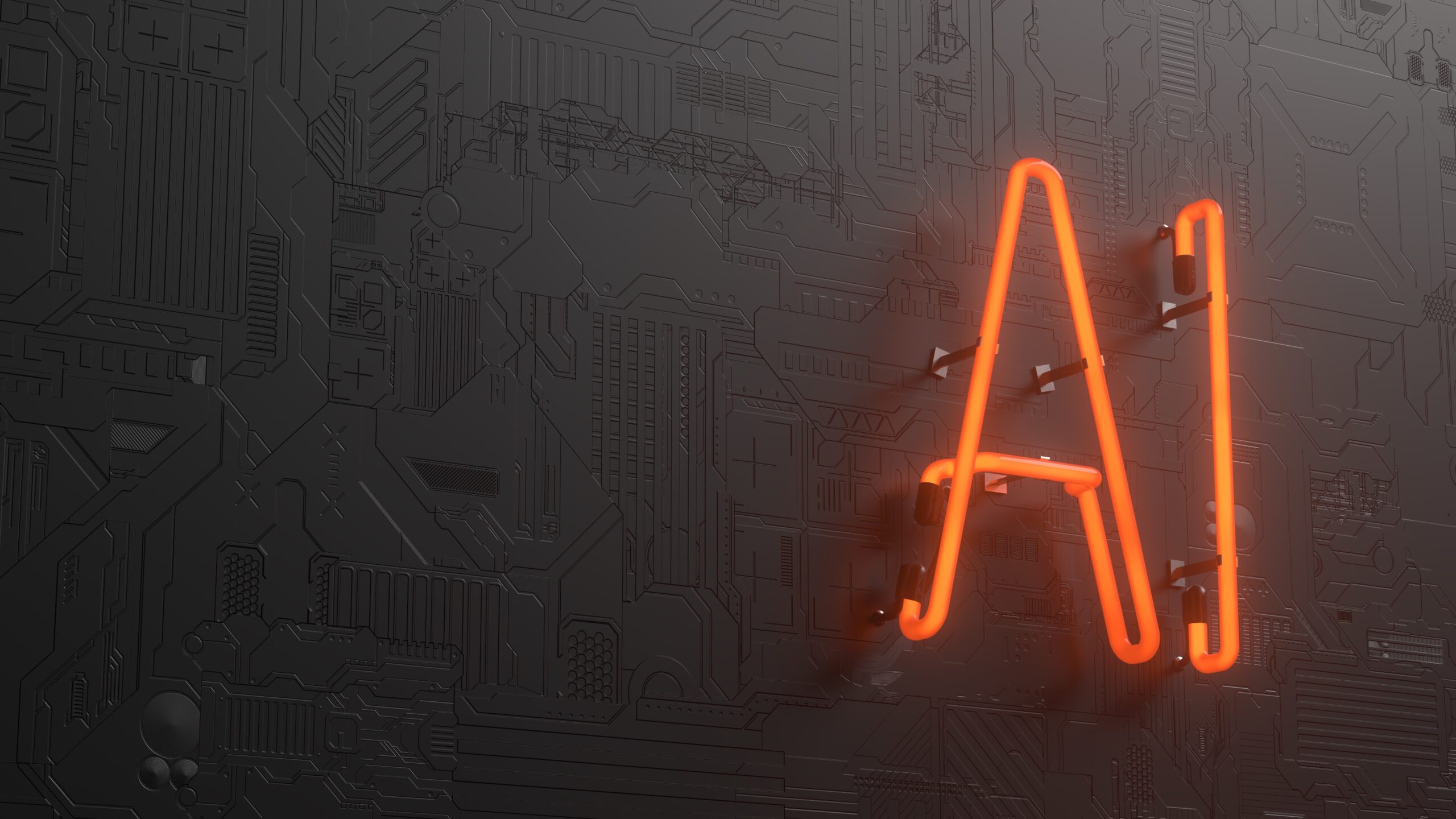
AI in Recruitment: Our Choice Our FightReflections on a presentation by Hung Lee
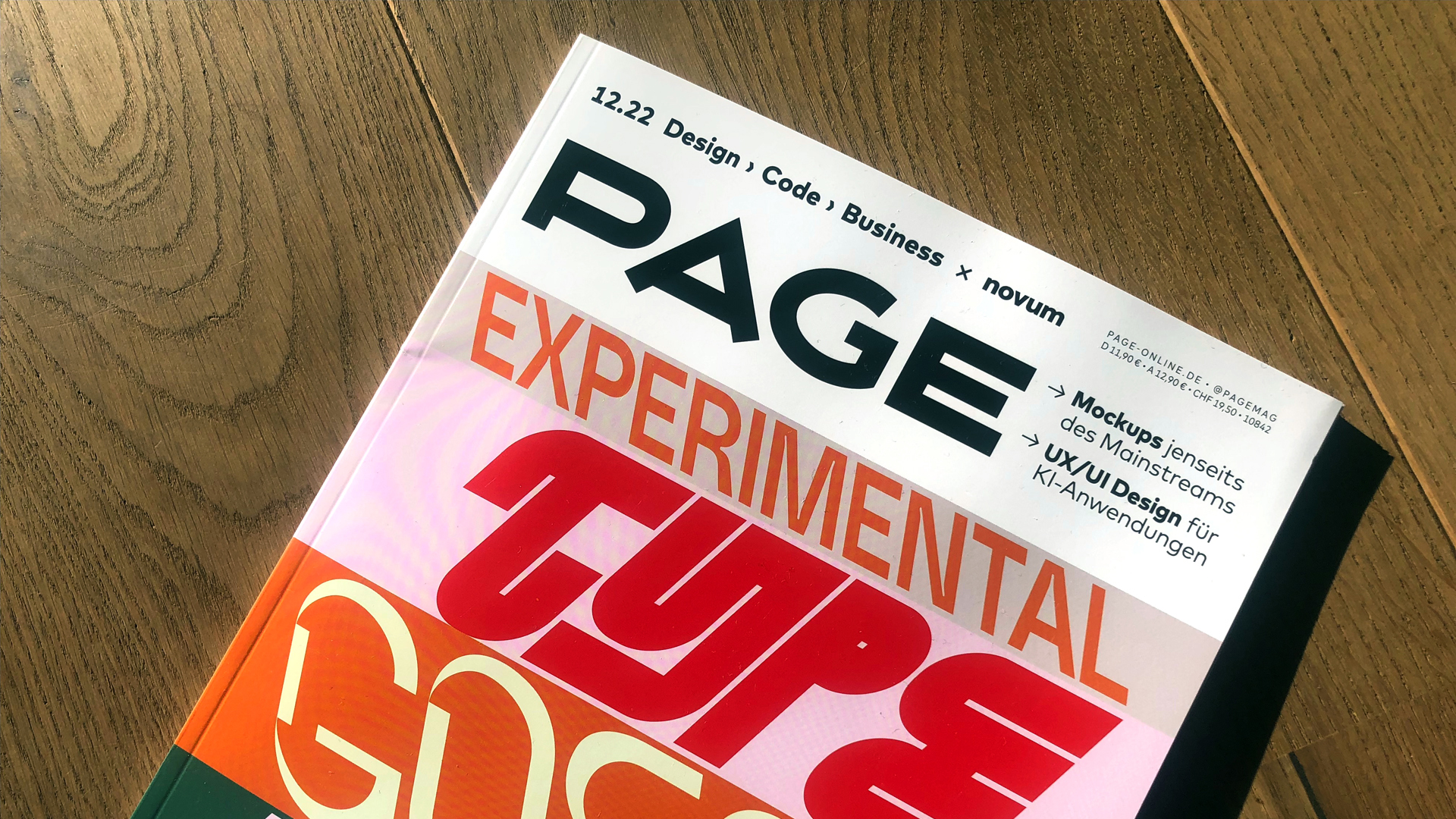
Full-Time, Part-Time, Free-TimeInterview for PAGE Magazine
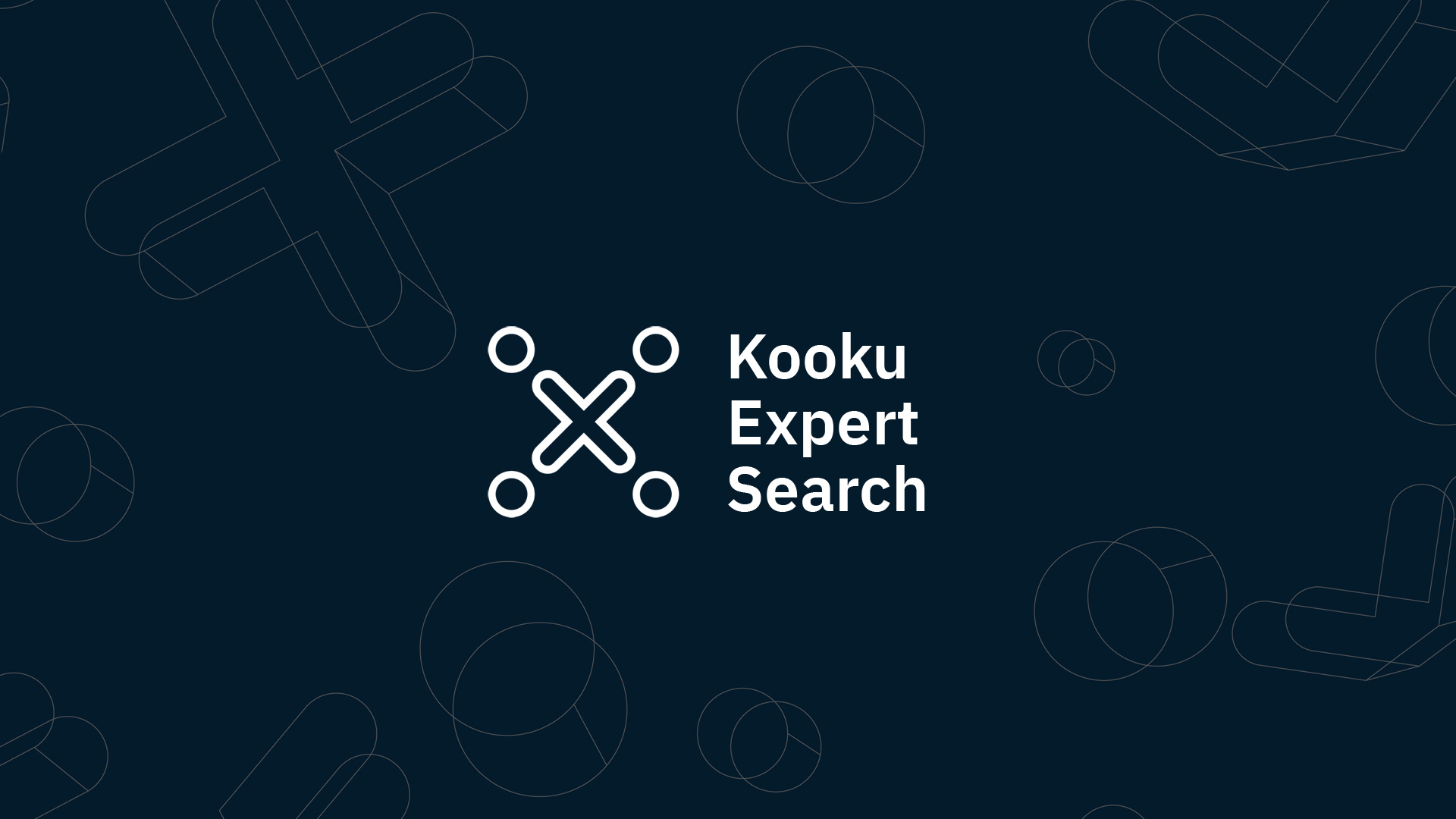
Kooku X — Vision to RealityBuilding a Minimal Viable Recruiting Brand
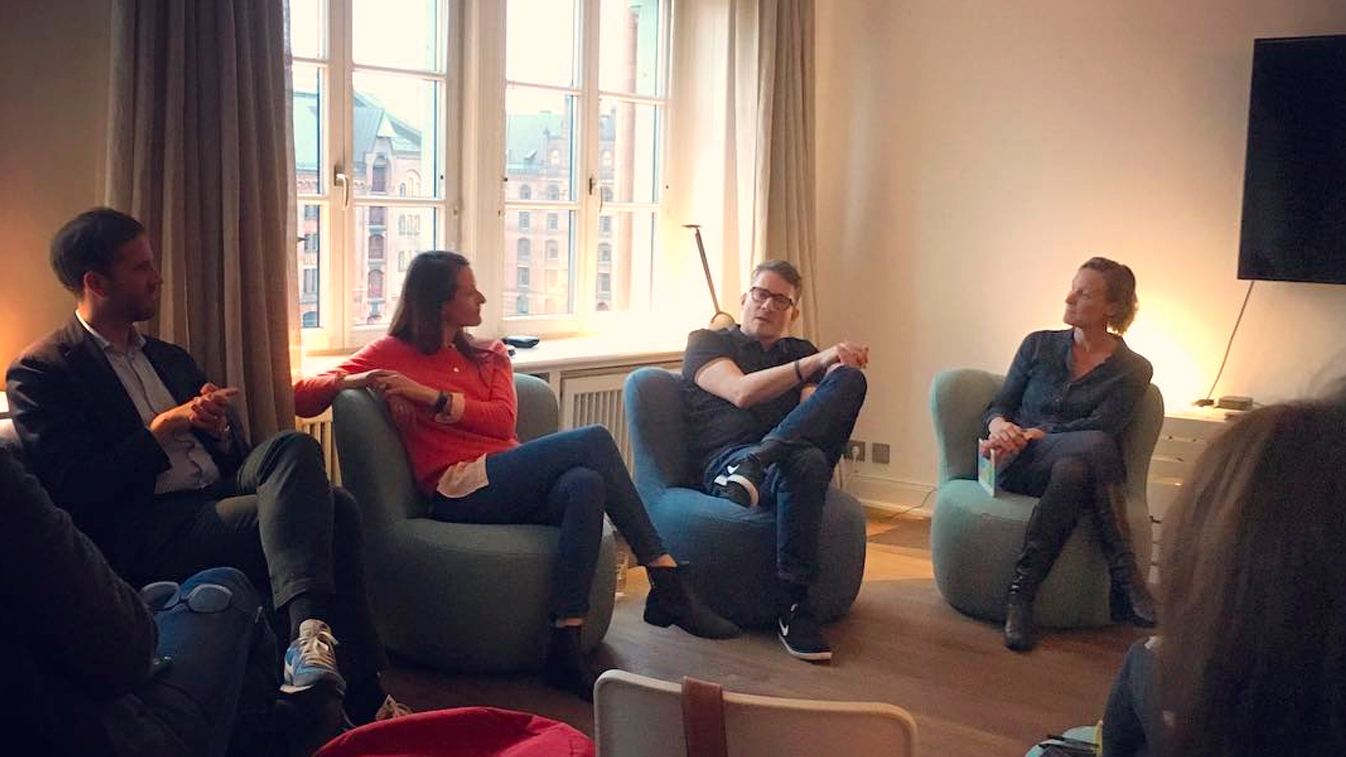
Mindset is EverythingSOULWORX ENERGIZER
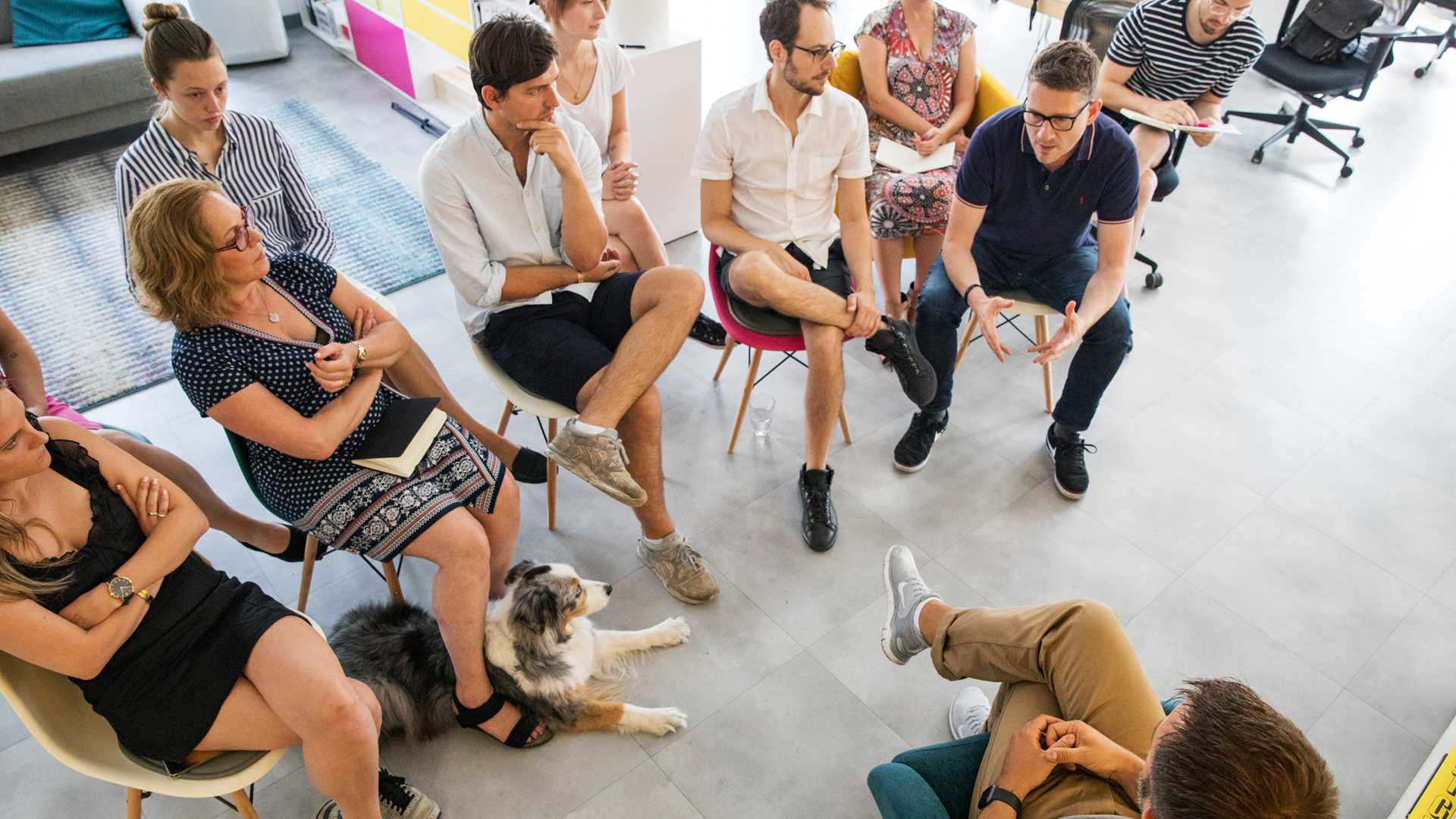
Leading TogetherBlog Post
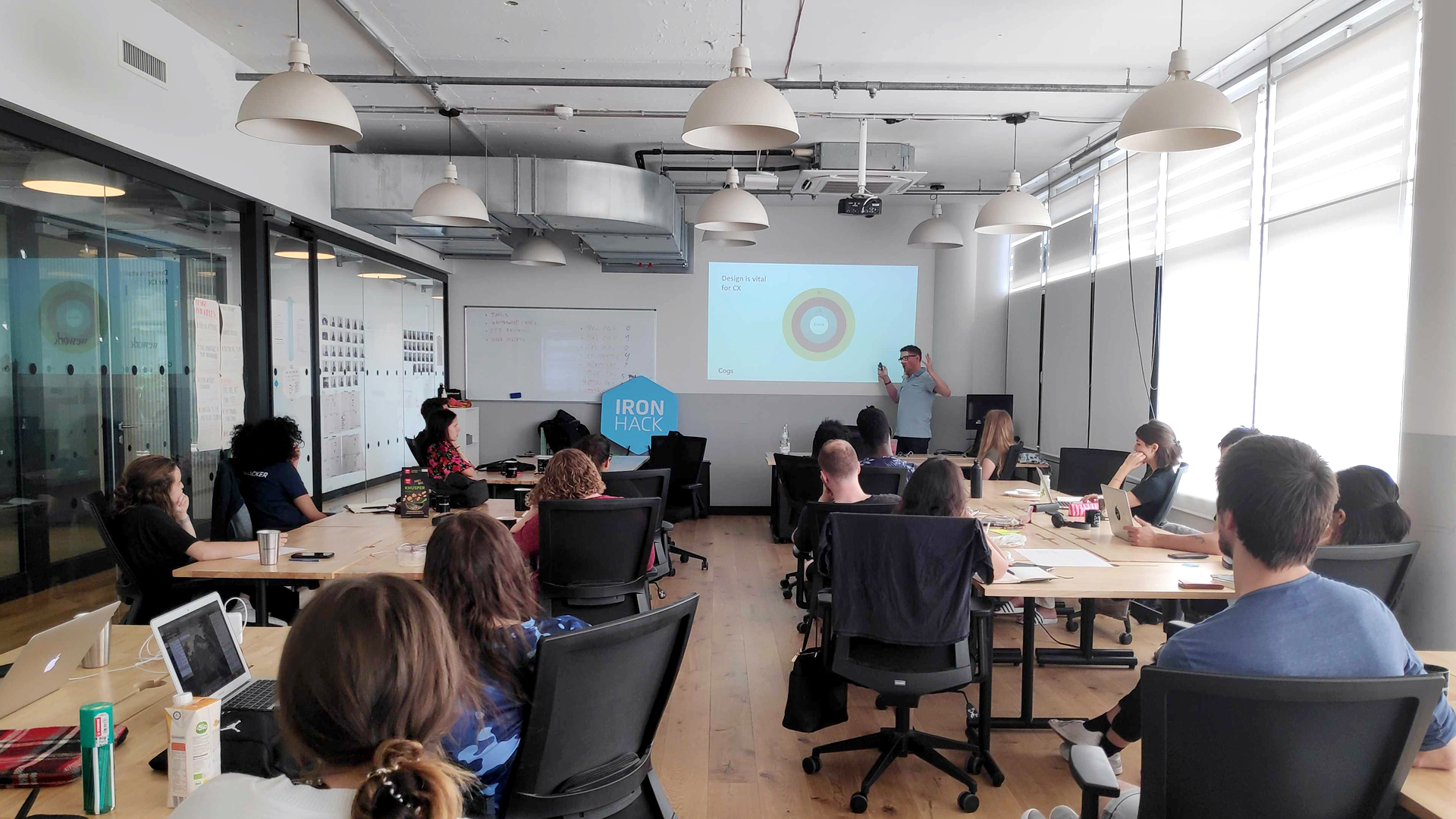
Unicorns, Hybrids, and Other Fantastic BeastsIronhack Workshops
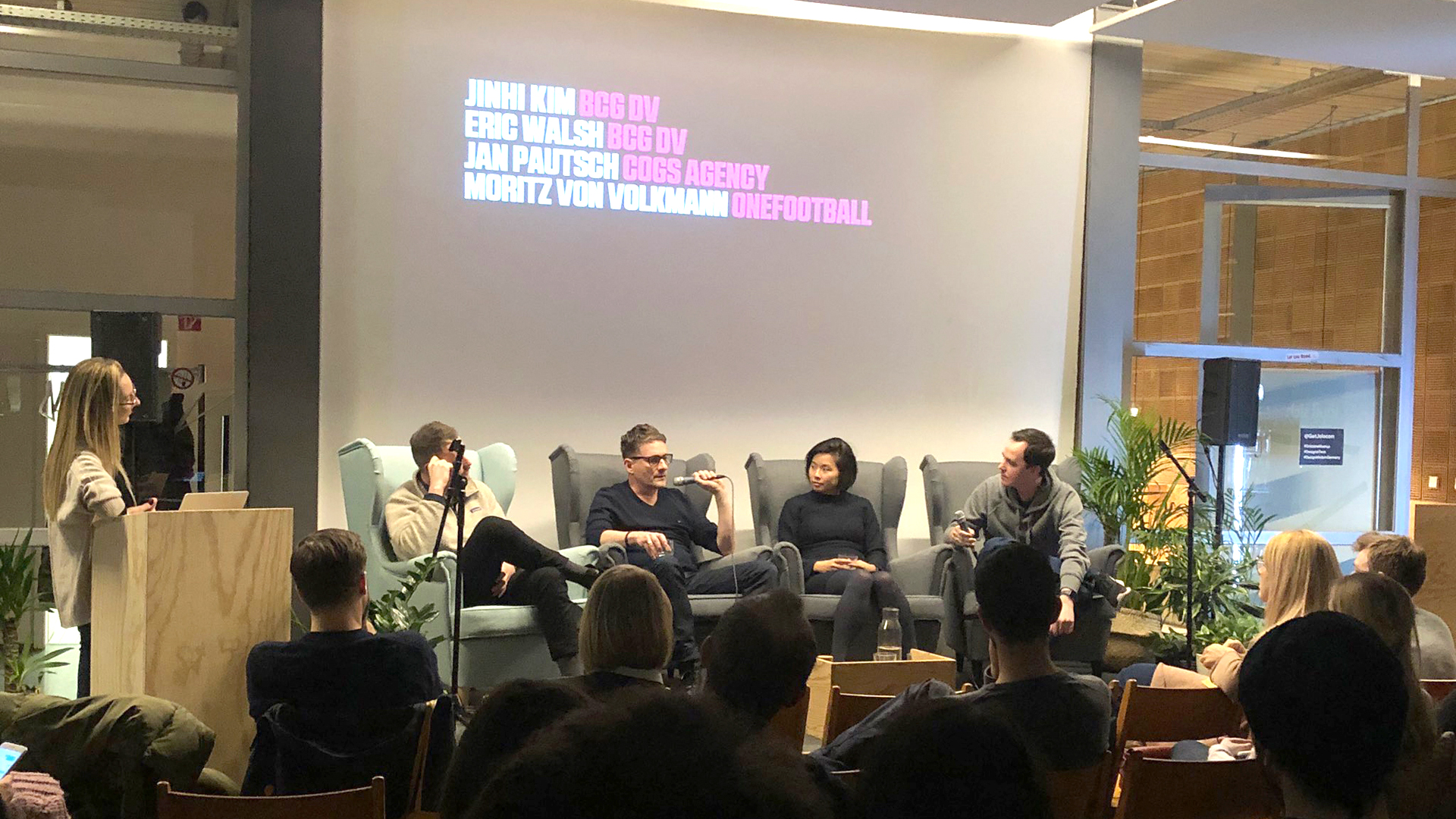
Embrace VarietyBerlin Dribbble meetup
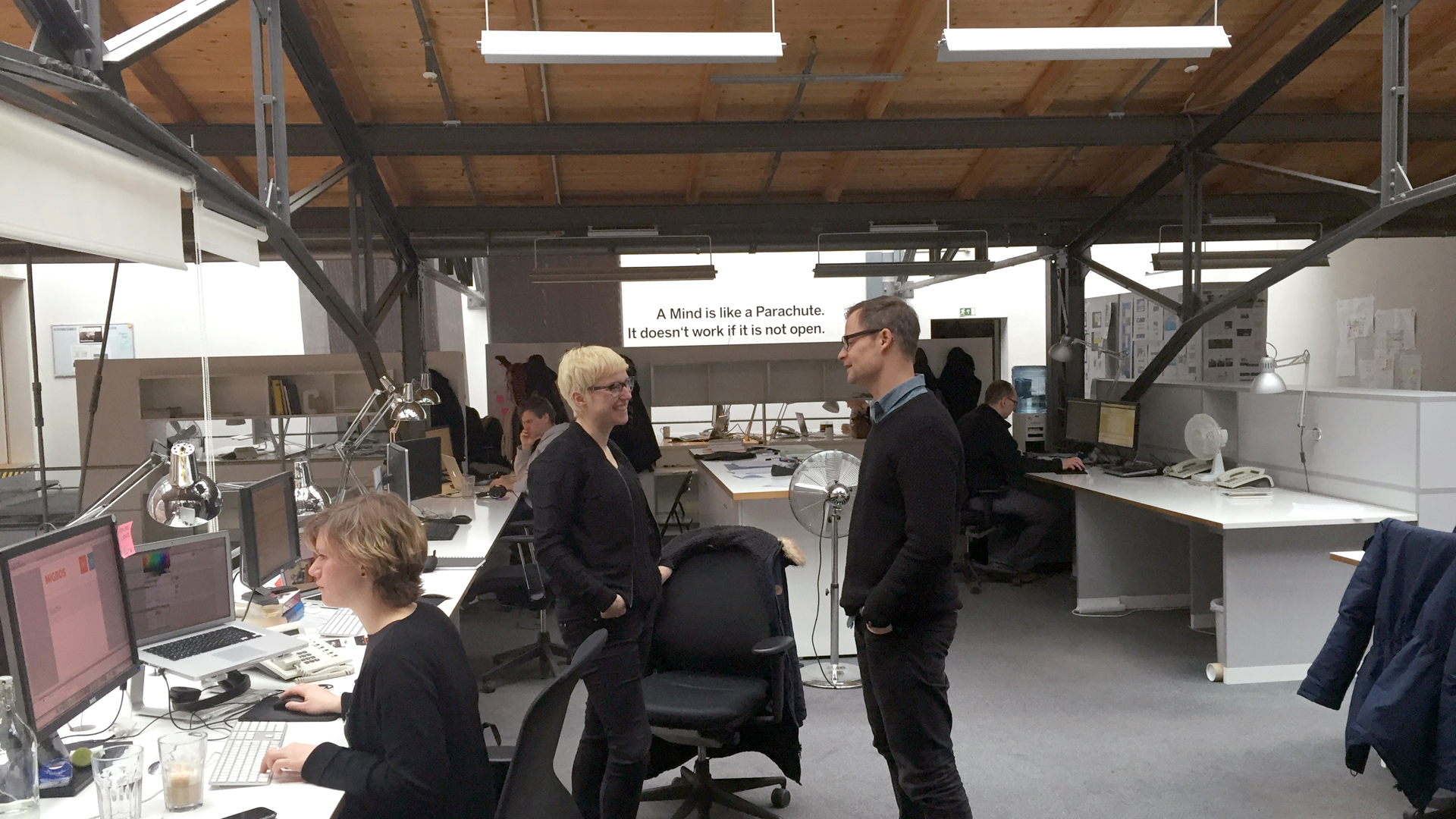
Is Flatter Better?Blog Post
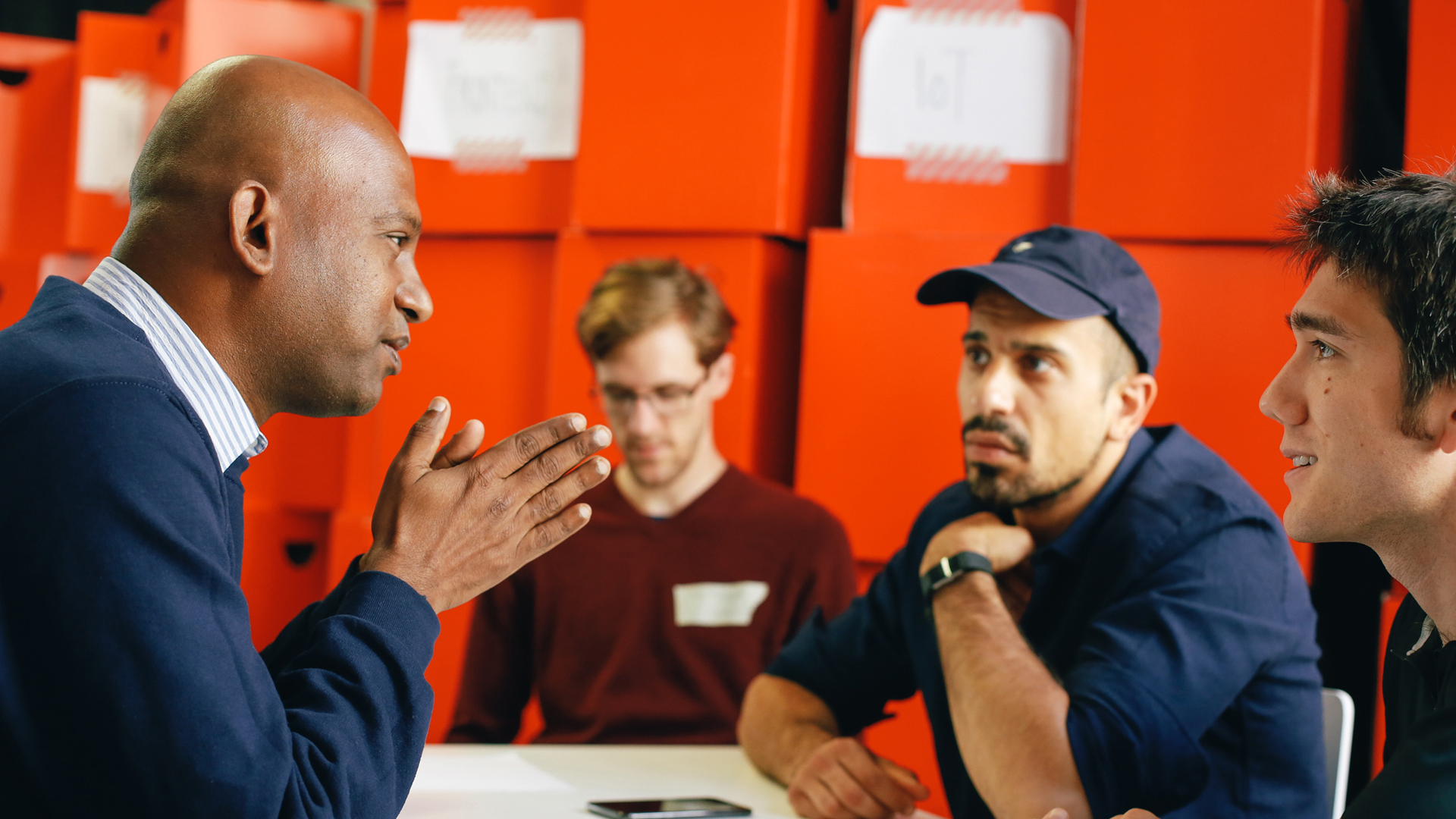
Tech-Speed-DatingVolunteering at ReDI School
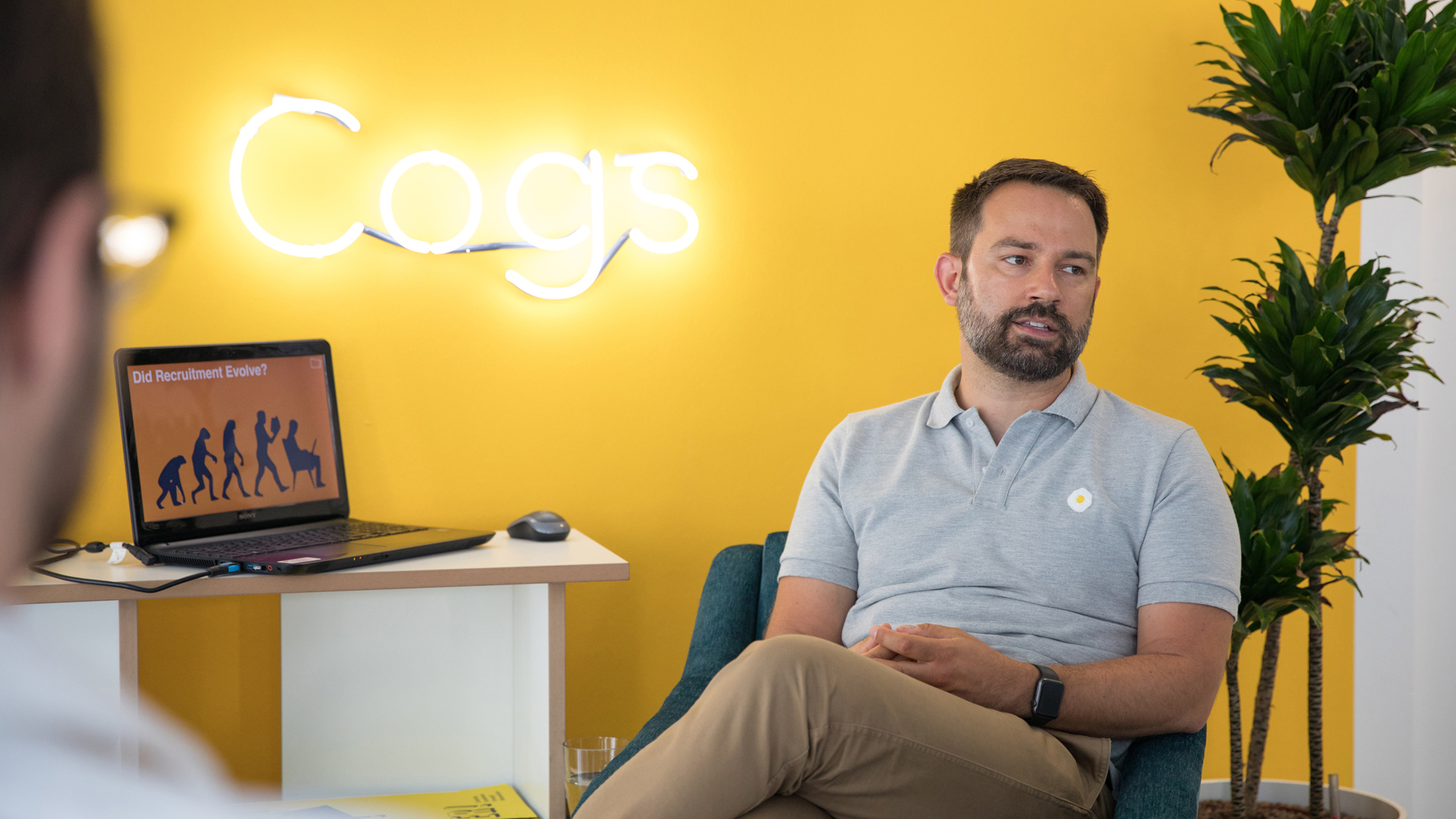
Cogs CrunchKnowledge Sharing Format
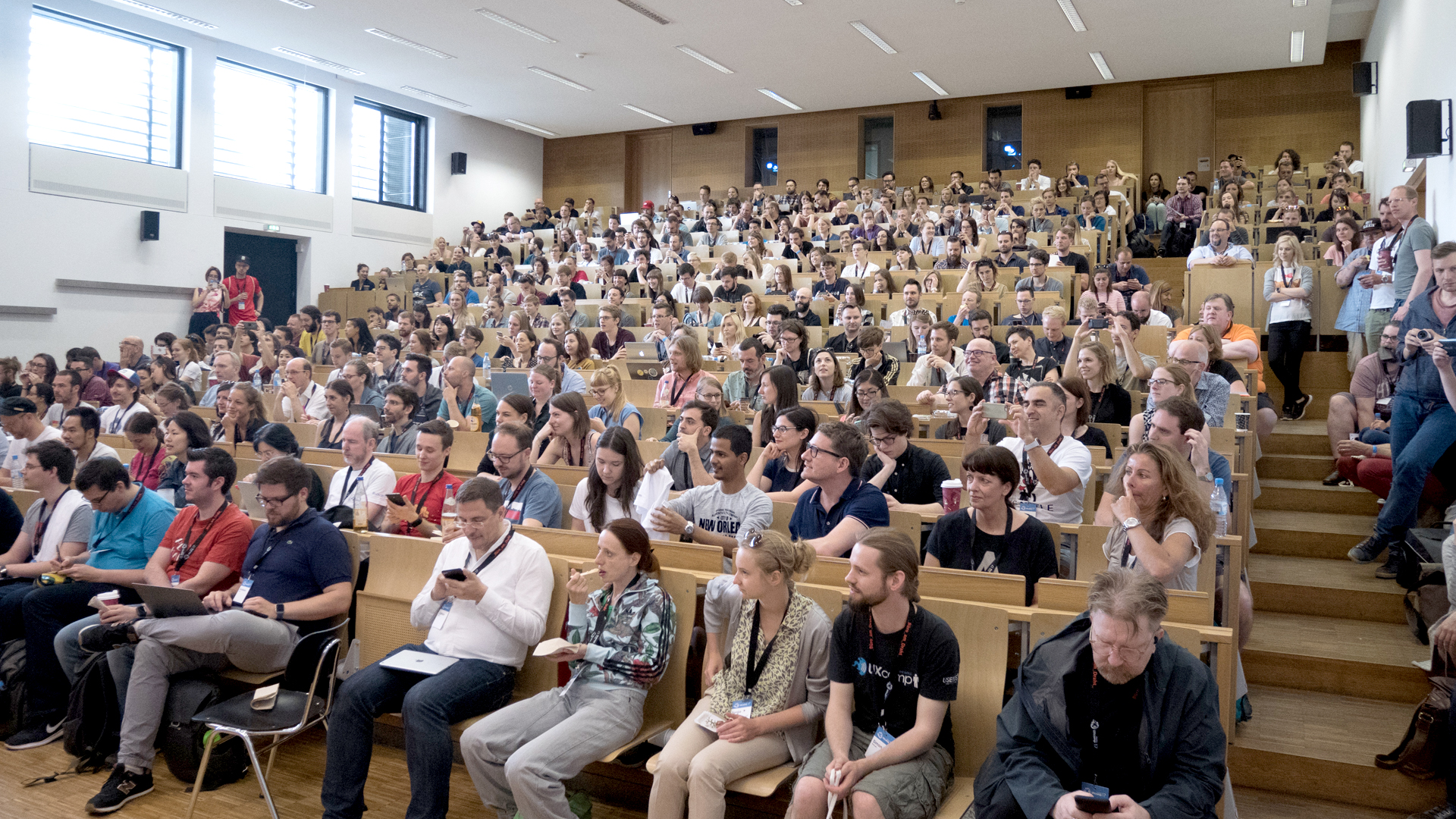
Headhunter SecretsUXcamp Europe, BarCamp
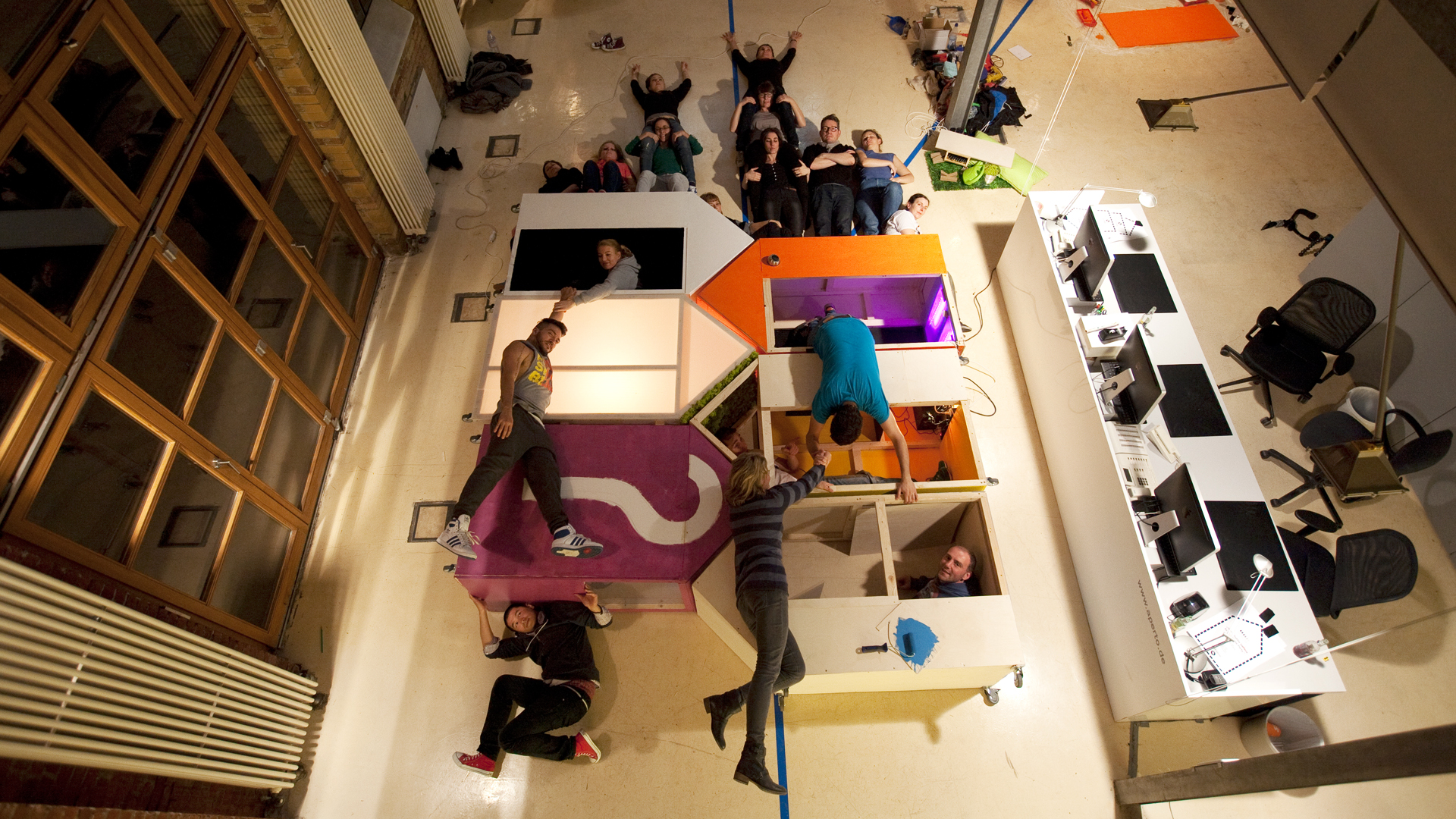
DECODERInnovation Platform
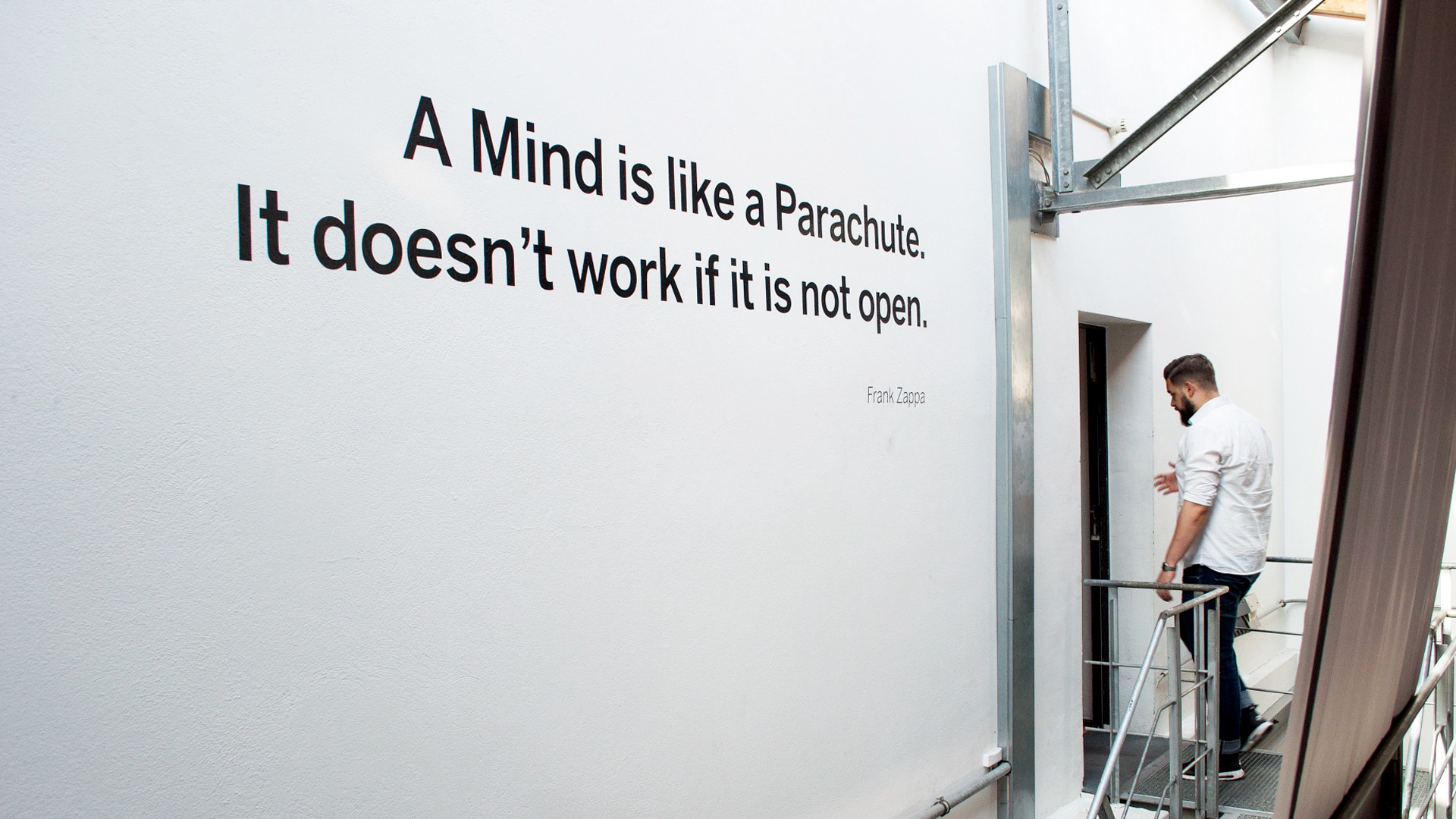
Humanizing OrganizationsBlog Post
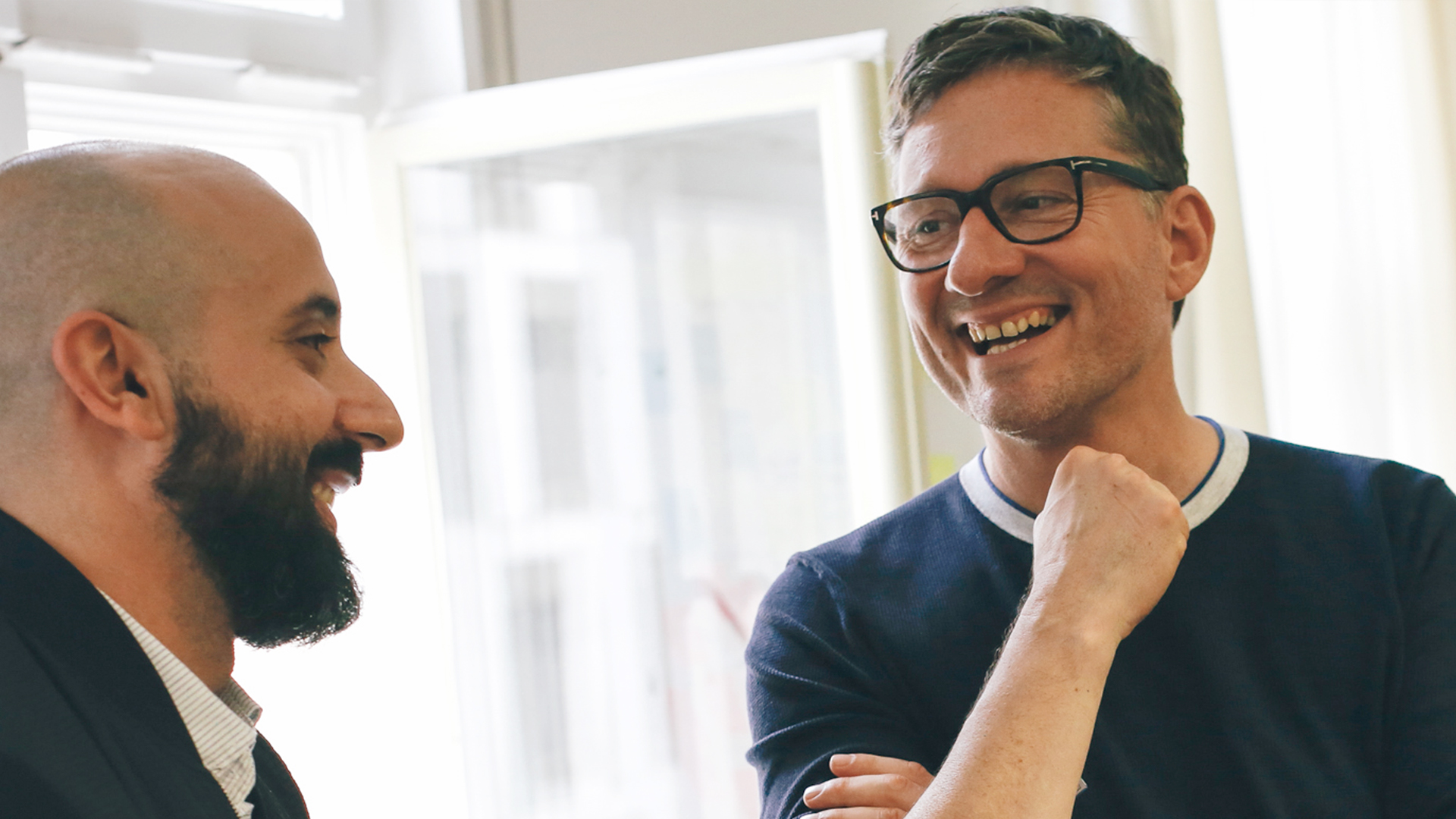
Service and Selected CasesPDF Download (PW required)
© 2025 Jan Pautsch
© 2025 Jan Pautsch